|
To make such a bonnet, I set up a 16 inch long (41cm) warp of a dark green 2/8 wool and a worsted weight yellow, alternating 10 green and 2 yellow, ending with 10 green. I worked the green threads in an interlinking stitch, and the yellow threads in a vertical twining stitch. I described the vertical twining in my post of Feb 2, 2023. To gather the end loops, I divided the end loops into two groups, separated by color. I slid one color of loops on one blunt sewing needle, and the other color of loops onto the other blunt sewing needle. Dividing the loops in this manner allows me to snug the loops into a far smaller circle. When the loops are tightly gathered there is a reverse-widow's-peak in the centre of the forehead. To avoid this reverse widow's peak, I reserved the dark loops at either edge, did not include them in the gathering. Instead I stitched them together in a tight seam at the centre front of the bonnet. The reserved dark loops, sewn together at the forehead, make for a smoother line to which I could attach a brow band. The brow band is a length of weaving, made on a tape loom. I gathered the loops at the back of the bonnet in a fashion similar to the treatment of the loops at the front of the bonnet.. I stitched the brow band to the front 3/4 of the bonnet, leaving the band free at the very back of the bonnet.
0 Comments
En route to the British Museum, I stopped off to visit a friend who lives near Sheffield. I met Andy and Elaine a few years back. Elaine really wanted to know more about sprang. They were, at that time preparing to participate in an event, re-doing the battle of Marathon in Greece ... he was going to be one of the bad guys. I made him a pair of leggings, appropriate to the time period, and based on research by Dagmar Drinkler. It seems that Andy has worn these leggings to several events. Imagine my surprise when I read on the internet that sprang is not at all suitable for leggings! Andy showed me a post indicating that, with one broken thread, the pants will fall apart. This, I thought, is the perfect moment for a bit of testing, some experimental archaeological if you will. Andy allowed me to cut a thread in his leggings. To make it a fair test, I cut a thread at the knee, a place that would be affected by movement of the leg. Andy took a picture of me cutting the thread just in front of his left knee. Here you see the broken thread at the left knee. Andy then went outside to do some work in the yard. He cleared his deck of the leaves, and tended to his leaf-blowing machine. His leggings stayed on the entire time ... no falling apart ... no falling off. Indeed no increase in the size of the hole. The wool threads stayed put. Wool has a certain 'grabbiness' to it's surface, and the wool sock-yarn that I had used to make the leggings is no exception. Yes, I've seen silk sashes in museum collections with long vertical slits, where a thread broke. The slipperiness of silk as well as the simple interlinking structure would allow a slit to develop ... but the slit will only open up so far. At some point the length of the cut threads will, itself, prevent further un-doing. The structure of the zig-zag pattern in these leggings also helps prevent un-doing. I repaired the damage I had caused, tied a knot to mend the cut ends, and tucked the knot to the inside of the leggings. The damage is now repaired, the knot almost imperceptible.
A big Thank You to Andy Cropper for permitting me to carry out this test. Spring is slow in coming here in Winnipeg. Today was a balmy above freezing temperature, but back down to below freezing tonight. Meanwhile, I’m busy with my sprang. I’ve been busy making military sashes. I’m also working on another pair of sprang leggings. These were inspired by images of Persian warriors fighting the ancient Greeks. Indeed a friend of mine is a re-enactor, who plays ‘Hoplite’ and will be going to Marathon, Greece, to re-enact the battle that made famous the practice of 23 mile runs. Yes, sprang can be ‘shaped’ and there is fair evidence that ancient Persians used the sprang technique to create form fitting clothing such as leggings and shirts. Here is my current sprang piece, destined to be leggings. The zig-zag pattern is achieved by the use of twining within a background of interlinking. For more information on sprang twining, check out my youtube videos which give you basic instruction on twining.
Instructions for the ‘W’ pattern can be found in my book Sprang Unsprung. October 2014 was spent in European travels. The impetus for the trip was the invitation to present information on sprang at the Early Textile Study Group conference in London. The topic for this year’s conference was Peter Collingwood. Dagmar Drinkler agreed to present her research on the subject of ‘tight fitting clothing in antiquity’, and I contributed my experience making leggings. I did take the time to tour around London, spent a day on a double-decker bus. While in the UK, I stopped in to visit friends. First up was Oli and Erica of Weavolution. They hosted me while I taught a finger weaving class to the Cambridge Weavers. Next I visited my friends Elaine and Andy. They toured me through Yorkshire, including a trip to Chatsworth House, an amazing place. Elaine and I talked sprang, and the probability that ancient Persians and Celts work sprang clothing. Back in London, I stopped in at Alexandra Palace for the Knit and Stitch show, on Oct 9, minding a booth for The Braid Society, and gave a class on finger weaving: Weave a scarf on the train. After the Early Textile Society conference in London, I travelled to Reading. There I was able to have a sneak preview of an amazing collection of braided pieces in the Reading Library, the Braid Society’s Biennial Exhibition. Near Reading is the town of Aldebourne where individuals interested in diverse braiding techniques meet regularly in the local town hall. Thanks to Sally, and to my hostess Rosie, I taught another workshop there, this time finger weaving (last time was sprang). On to the mainland of Europe. Thanks to Frieda who met me at the train station in Antwerp, Belgium. I taught classes in the Belgian town of Sint-Job-in-‘t-Goor. This was an ‘advanced finger weaving class’, the follow-up to a previous session. Participants explored some of the variety of patterns possible. The following day was a sprang class. Pauline brought a sprang cap that she had made after the sprang class last year. By then it was time for a rest. My friend Karin took me home. I sat in her backyard and worked on other sprang projects. Accepting an invitation to visit a very talented bobbin-lace weaver (this sister of a Winnipeg friend) I travelled to Braunschweig. Between discussions on the subject of bobbin-lace, finger weaving and sprang, we toured through downtown Braunschweig, and made a visit to the top of the newly rebuilt ‘Schloss’ and the Quadriega. On to the Netherlands. Braid Society member and friend, Ria toured me around the Netherlands. We had been invited to the island of Terschelling. Resident of Terschelling, Marianne, is a very talented textile artist. She also has an amazing collection of textiles. She introduced us to the neighbourhood chickens. While on Terschelling, I visited the local yarn store, Tante Lies. Come to find out, I’d been volunteered to give a talk on the subject of sprang at the Tante Lies yarn store. I brought along a frame, and people were invited to give it a try. While in the Netherlands I was privileged with a visit to another Ria. On Nov 1, I taught a sprang class in The Hague at the textile studio known as DeSpinners. Thanks to Dineke and Katia, this was a follow-up to a finger weaving class I taught last year. What a pleasure to spread the good word about these amazing techniques to individuals interested in learning. On to the final destination, Lyon, France. The Greco-Roman museum is built into the Fourviere hillside, right beside the remains of two Roman amphitheatres. If you’re in Lyon, you really should stop in, it’s a ‘must see’. The theme of the month at the Fourviere Gallo-Roman Museum in Lyon was textiles. I had been invited to give a lecture on the subject of sprang bonnets. This is the reason I’d been working on that sprang turban. Wednesday I presented a workshop for children (and their parents, grandparents) on diverse braiding techniques. Thursday I presented my lecture and workshop on the subject of sprang. I brought along several replica sprang bonnets that I have made. Sprang frames were available and seven women took the opportunity to explore the basic sprang technique. The Gallo-Roman museum had a lovely little sprang bonnet, on loan from the Textile museum. Back at home, I’m now trying to map out the pattern.
I’ve been trying a few more variations of the sprang sock. Here’s a straight tube sock. It was made from a figure-8 warp, two rectangles worked at the same time. Cut apart, you get two socks for the work of making one … well, you have to do the finishing on the socks separately, gather the toe, sew the side seam, and deal with the fringes. This sock is a real tube sock: no fancy extra work to create the heel. The only problem with this sock is that people with sensitive feet might find all that gathering at the toe to be uncomfortable. The only solution for this that I can think of (decreasing the bulk at the toe) is to work from the toe up. This means you must work ‘free-end’ method, which technically is not sprang. It does give a lovely sock. I used several colors to emphasize the way threads were added. This sock has eliminated that bump at the toe. You begin with very few threads, and add more each row. This sock also features a short-row heel, and increases along the calf.
Yes, I’d like to post the directions on-line … but there’s so much to say, how to set up, how to do the interlinking, how to keep things even …. it needs a whole book. Yes, I’m still working on the book. It’s getting to the ‘proof’ stage. I keep finding errors, and want an error-free product to give to the world. |
Categories
All
Archives
May 2023
Categories
All
|
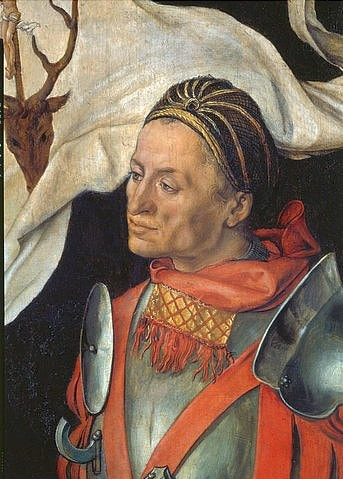
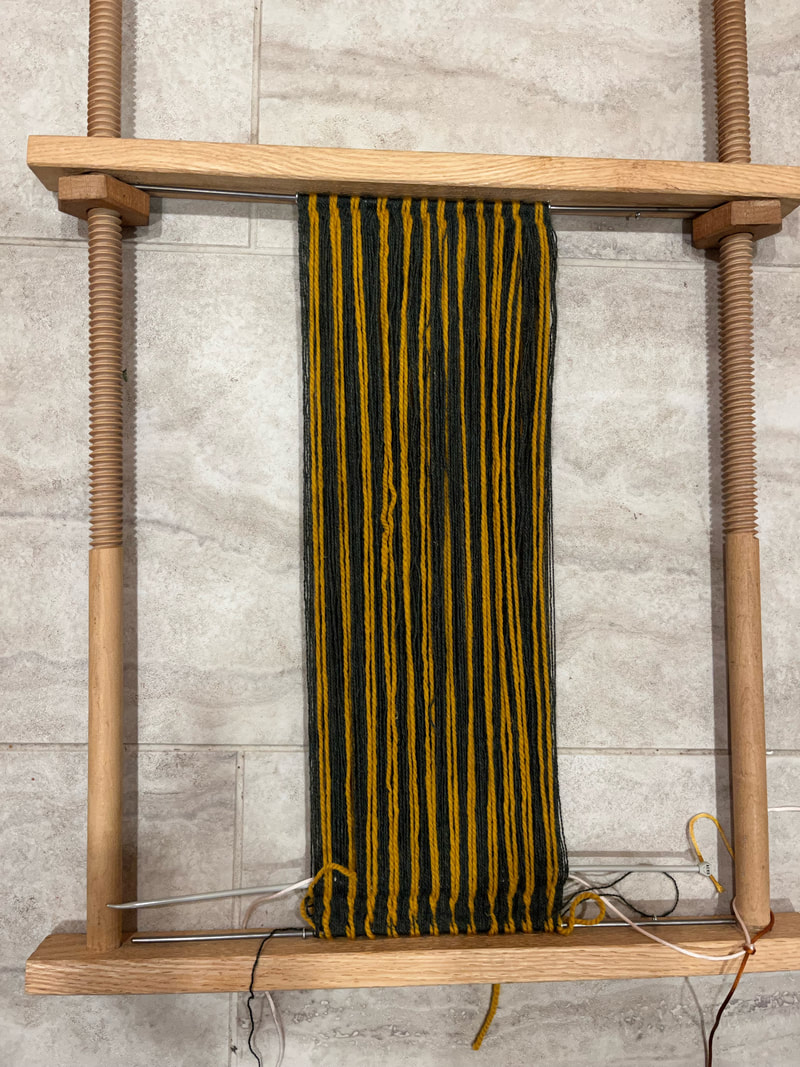
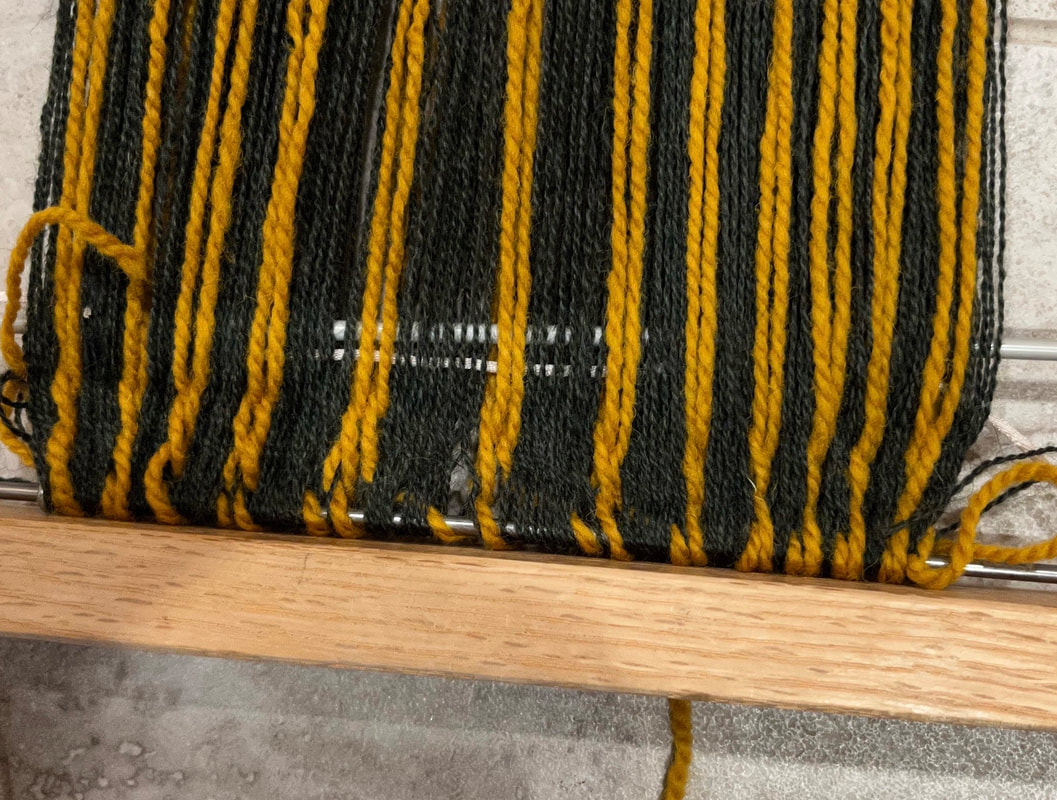
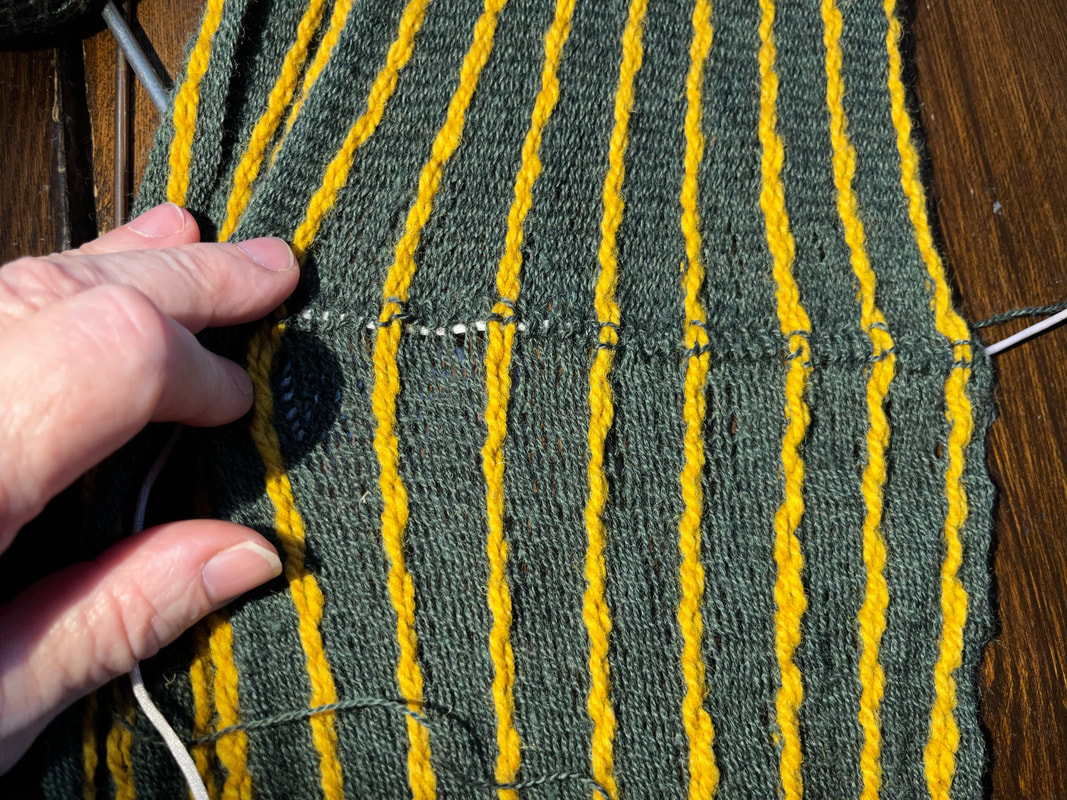
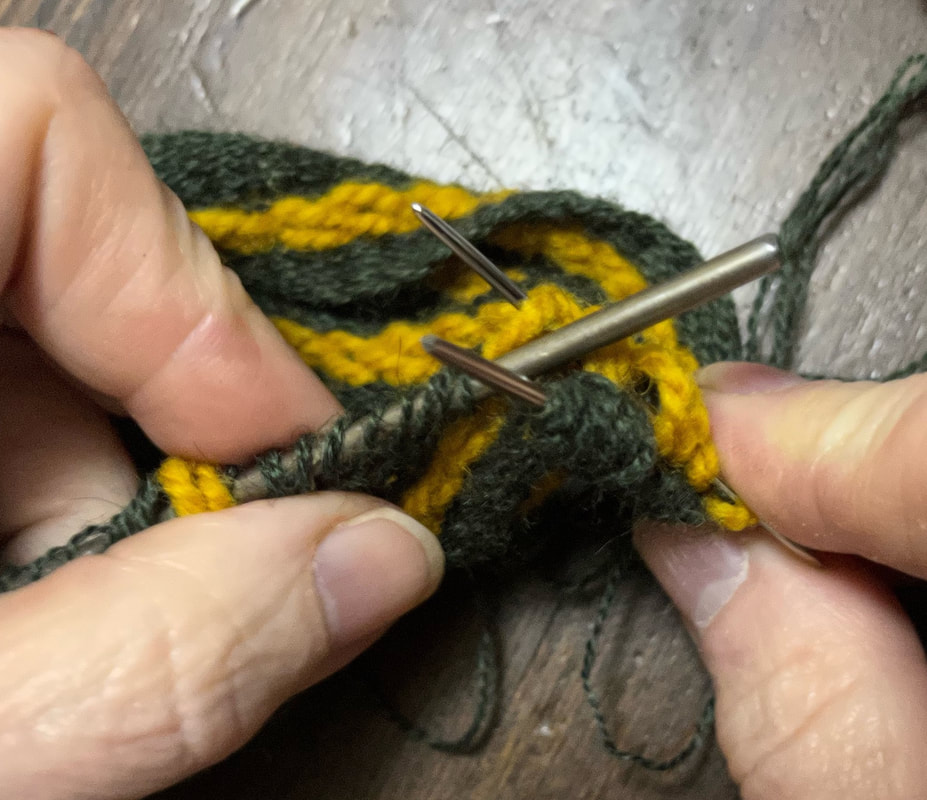
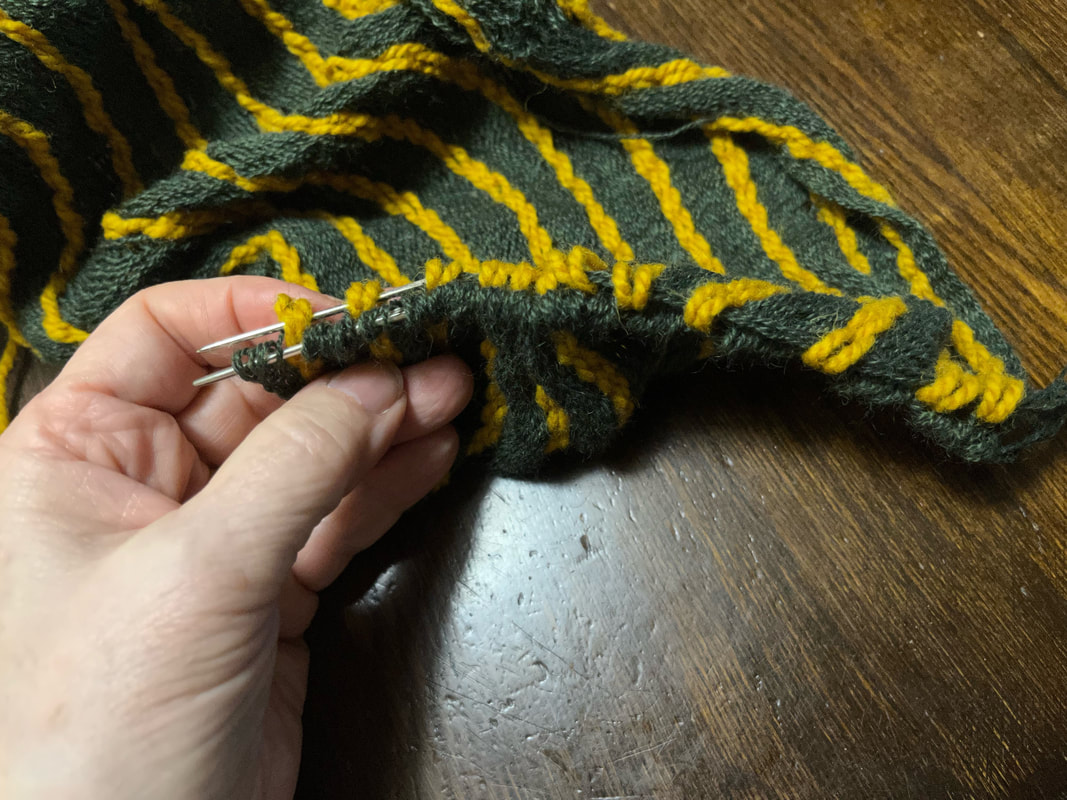
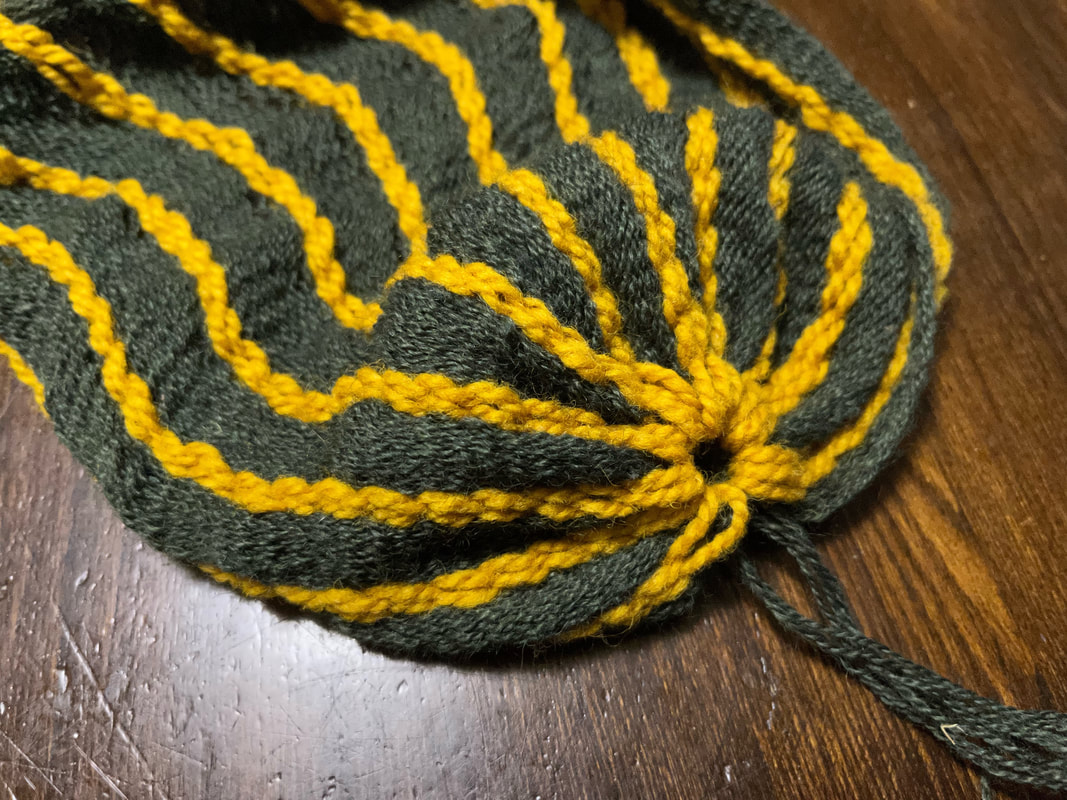
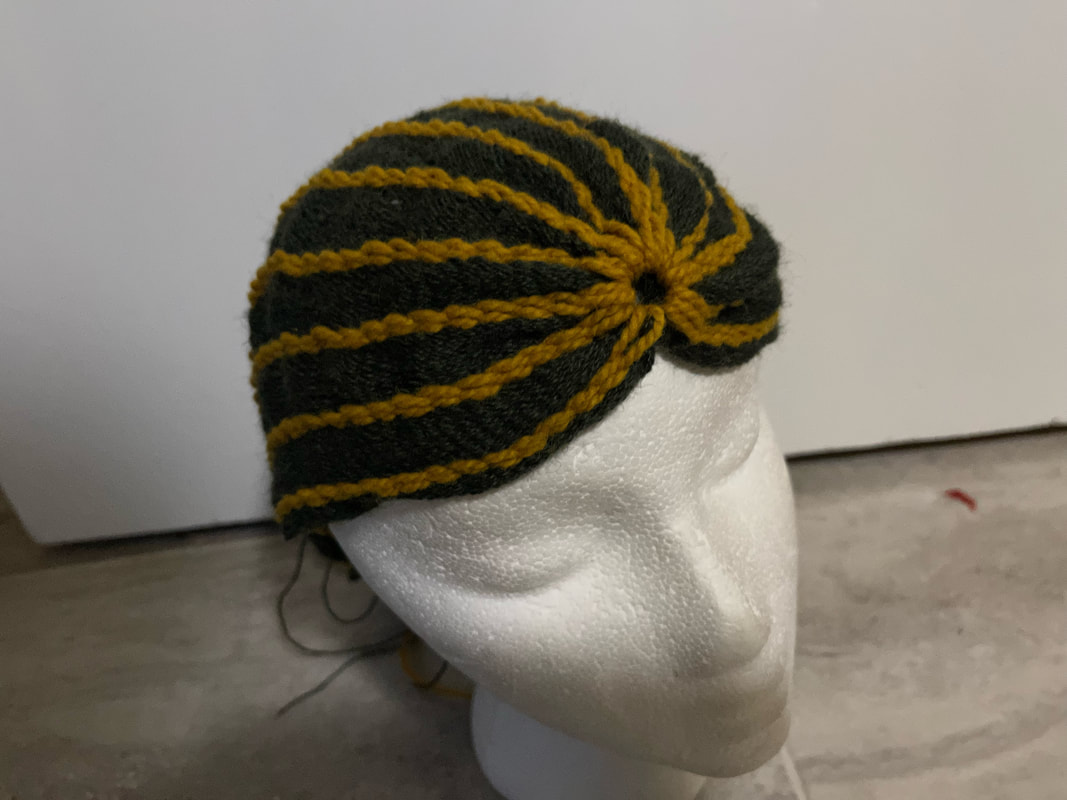
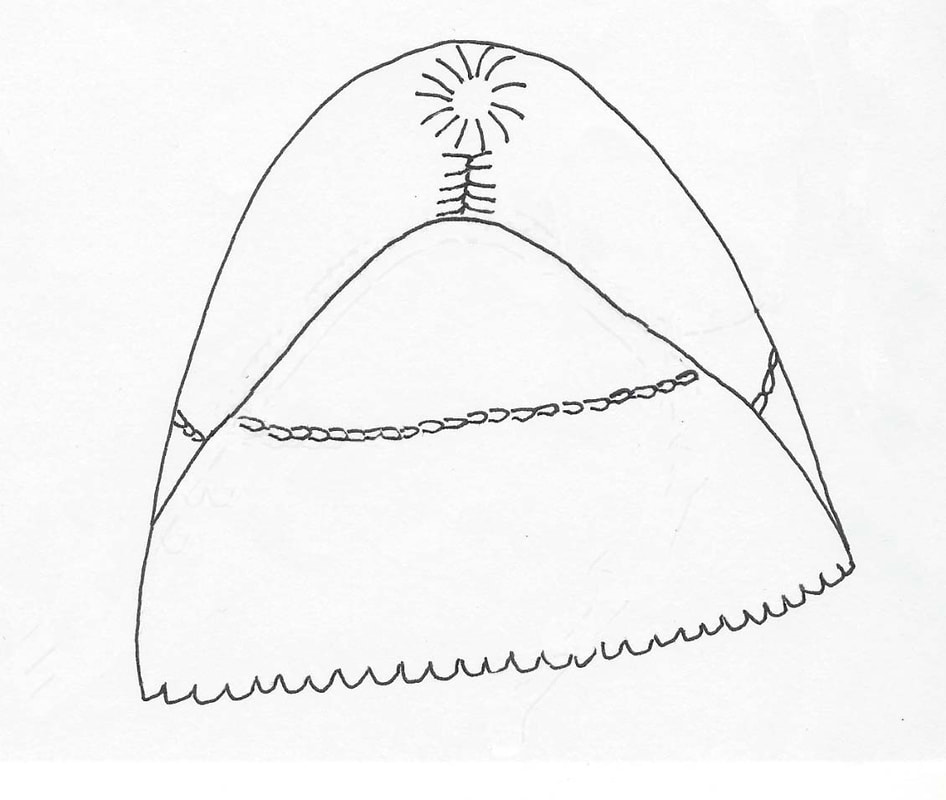
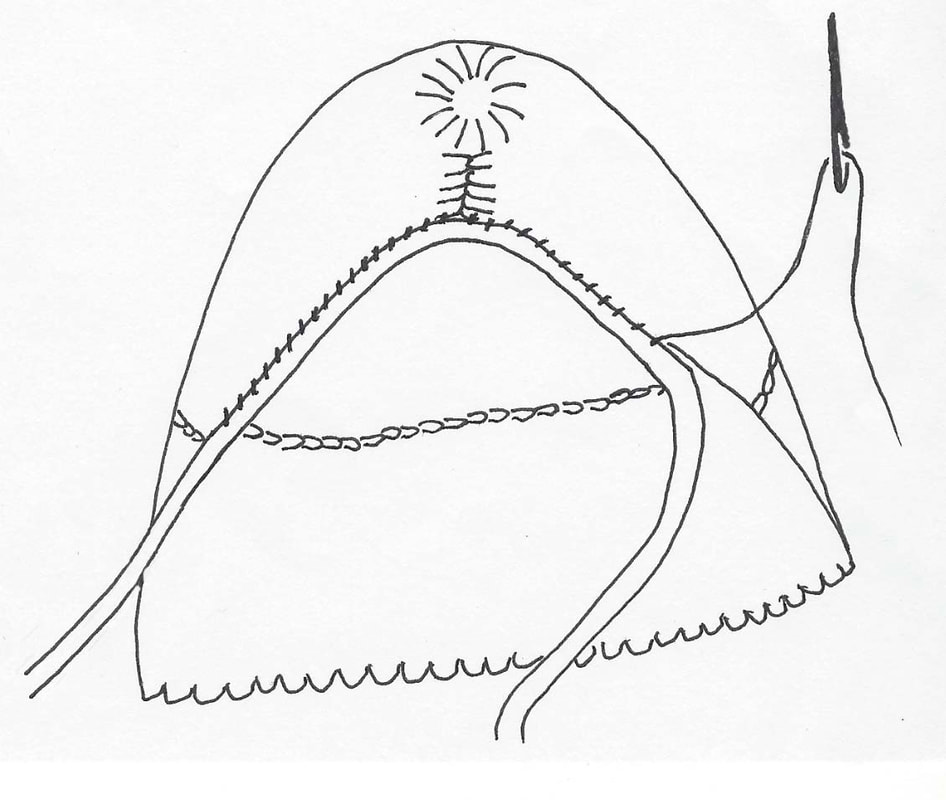
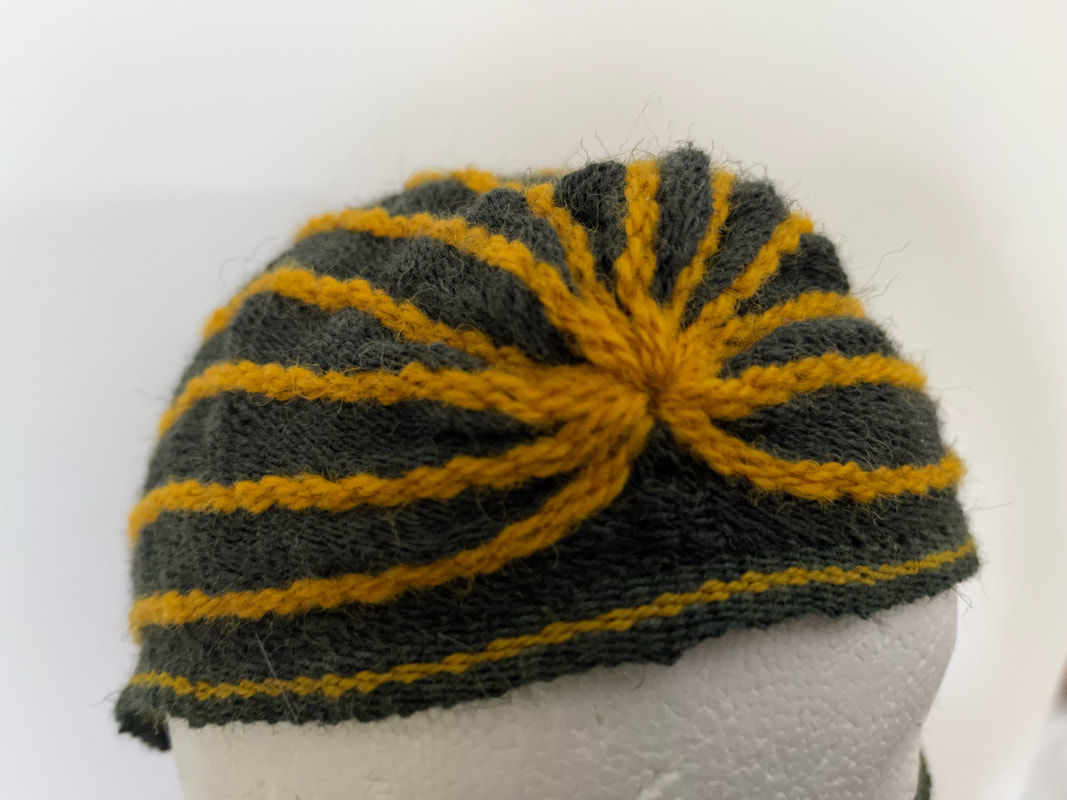
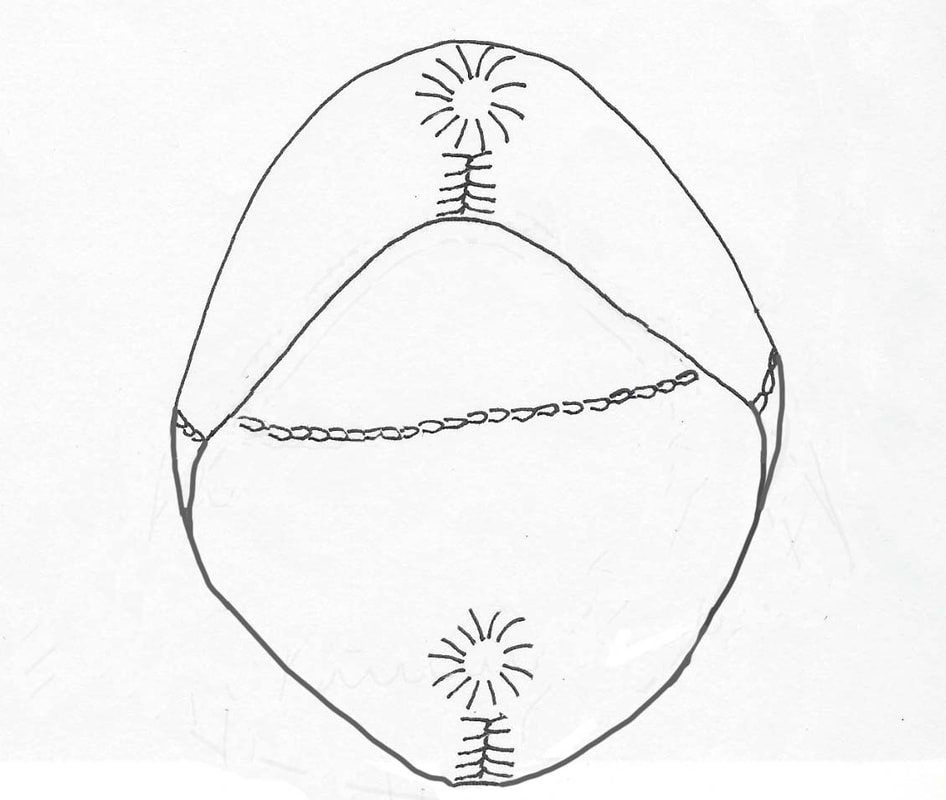
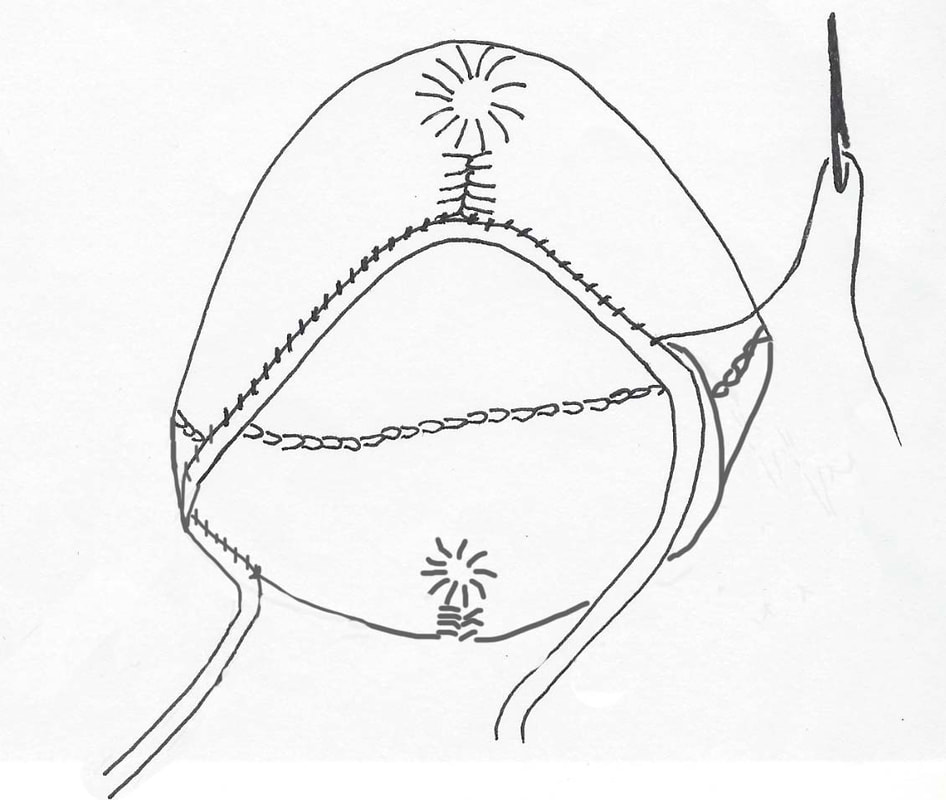
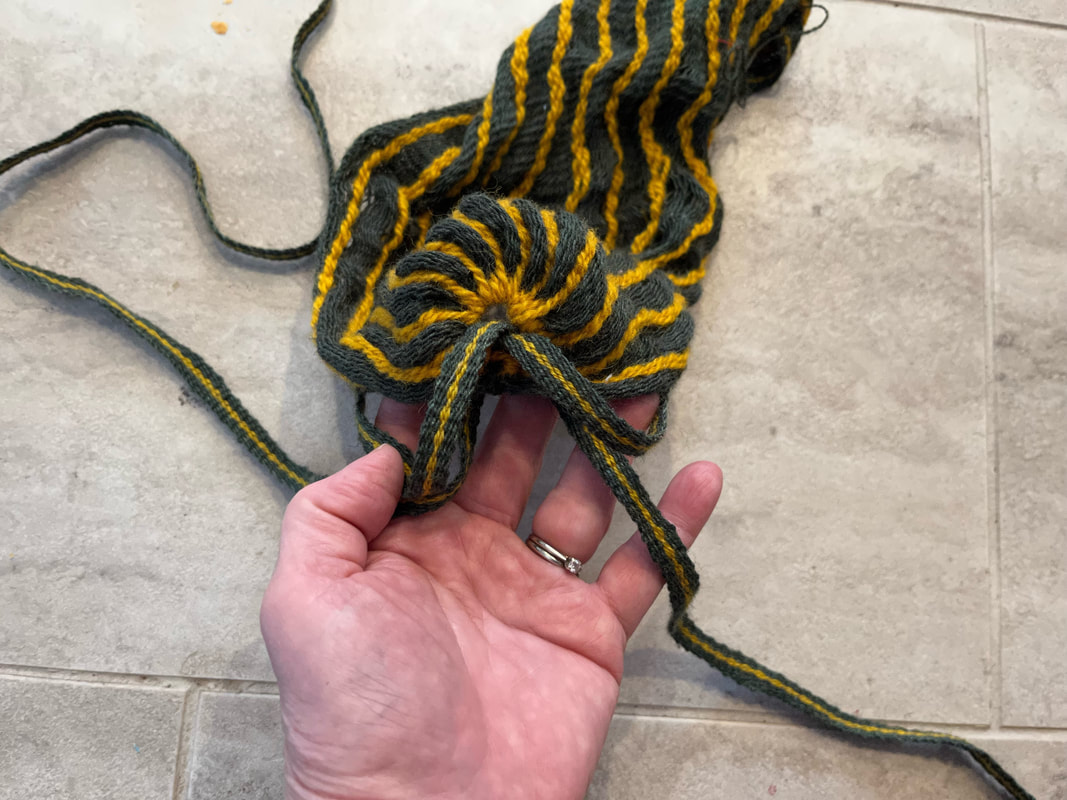
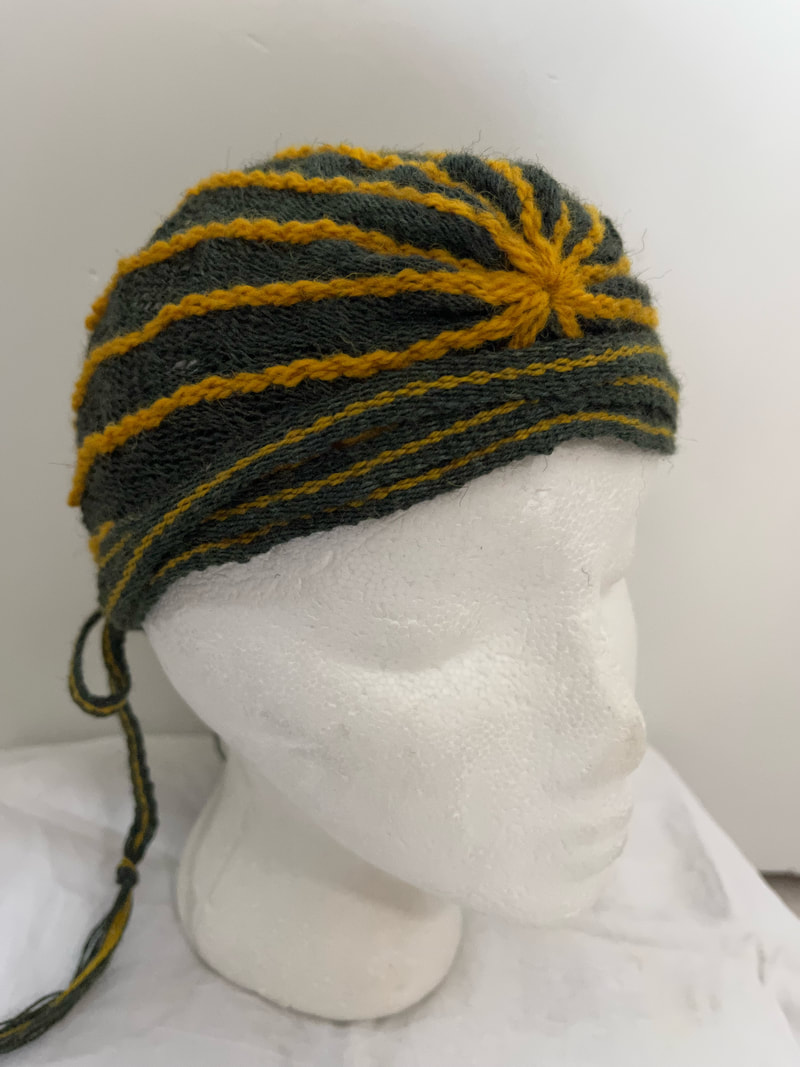
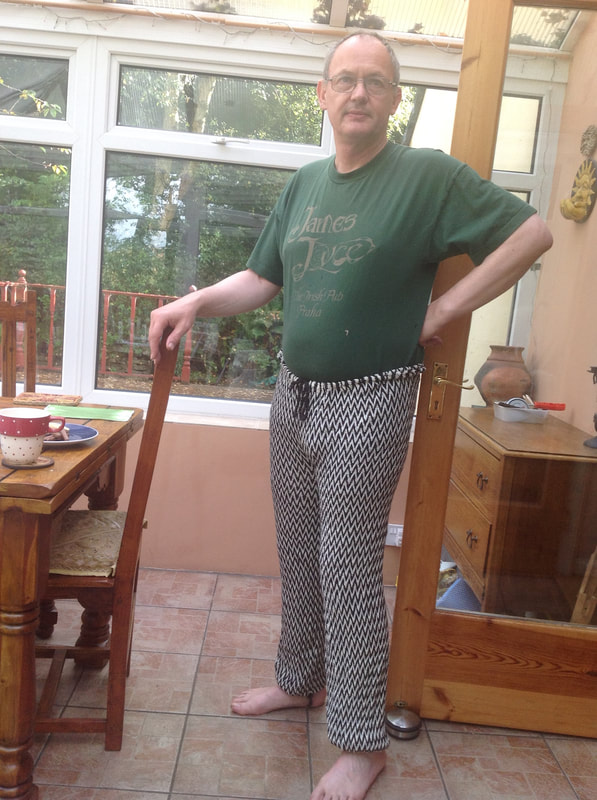
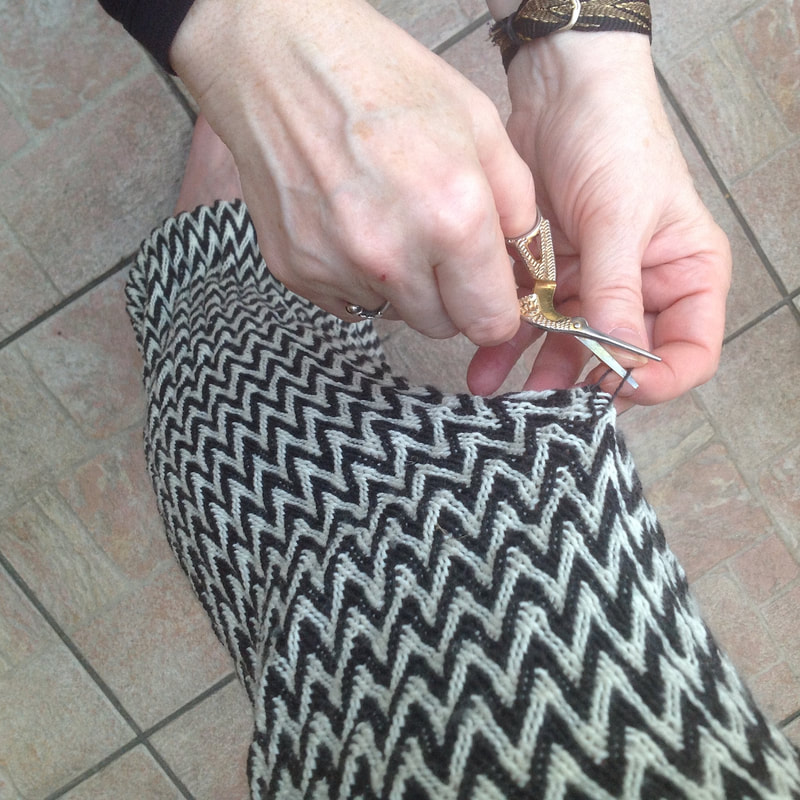
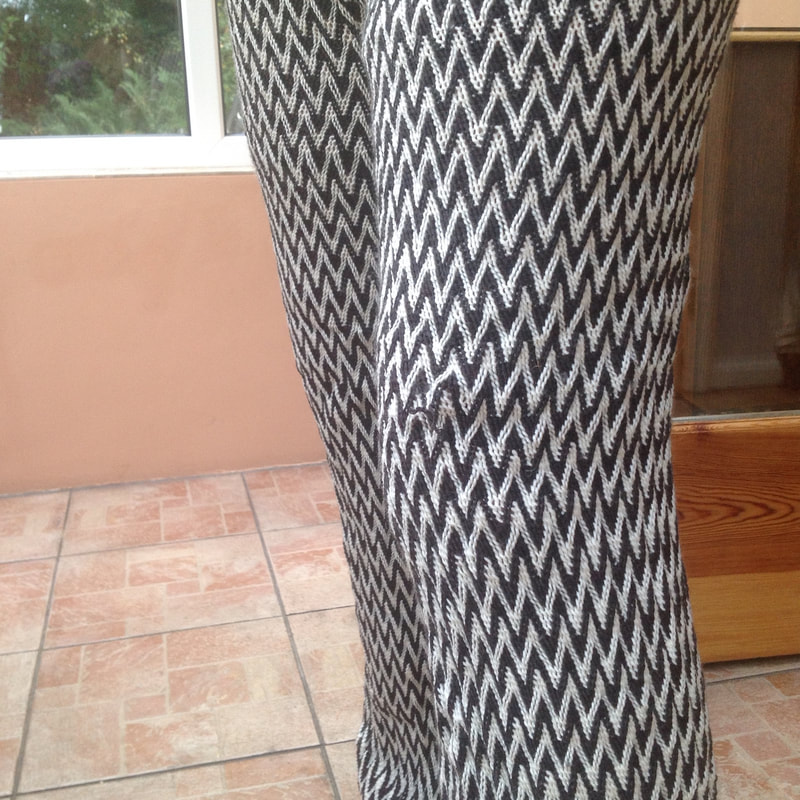
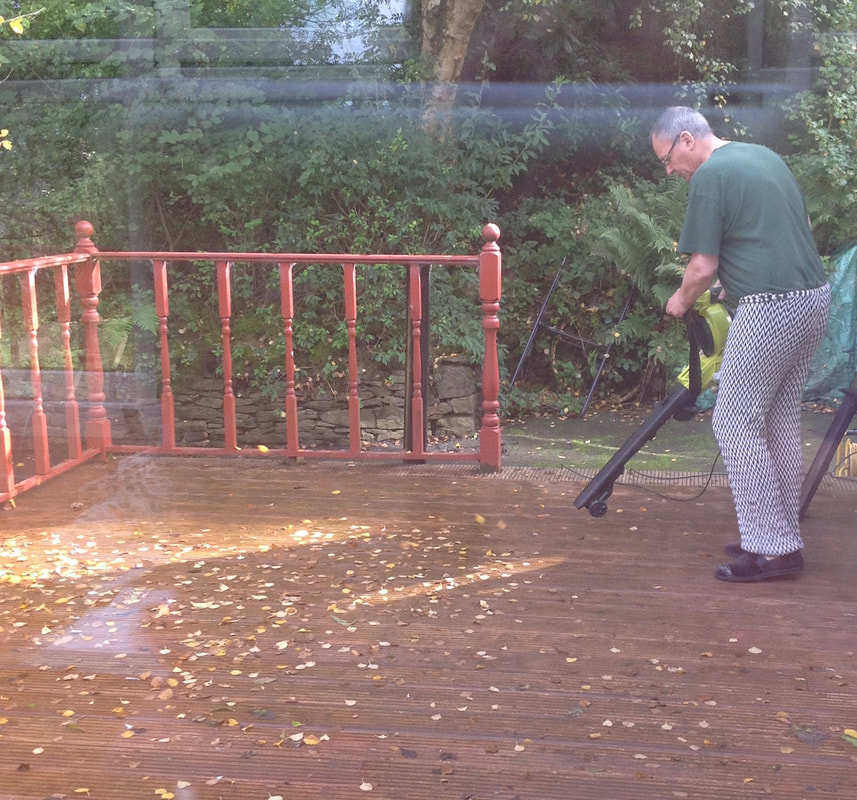
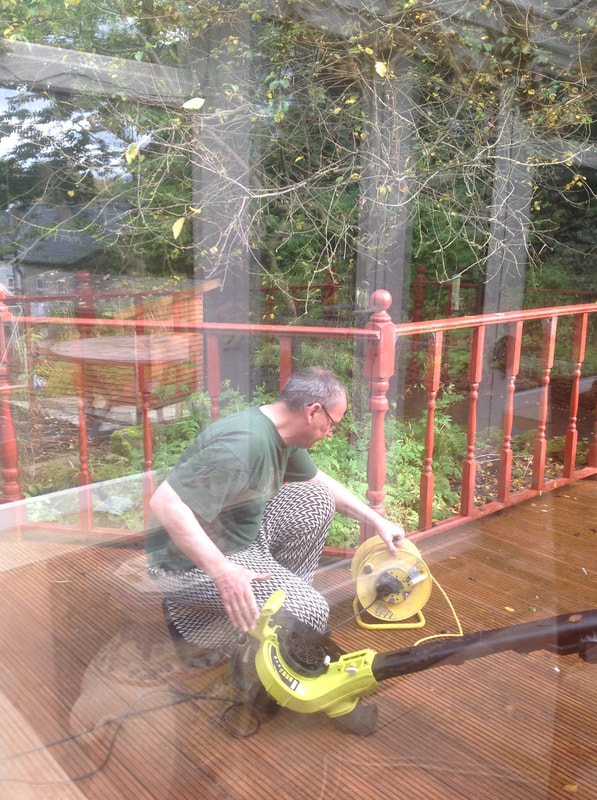
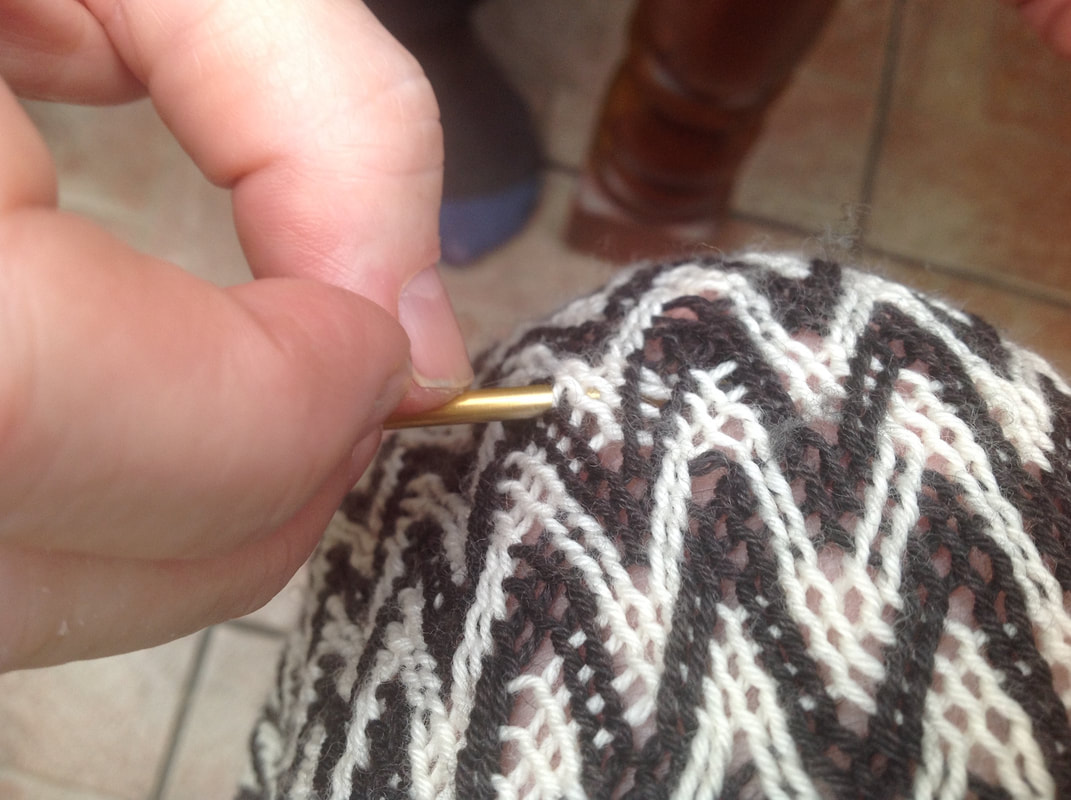
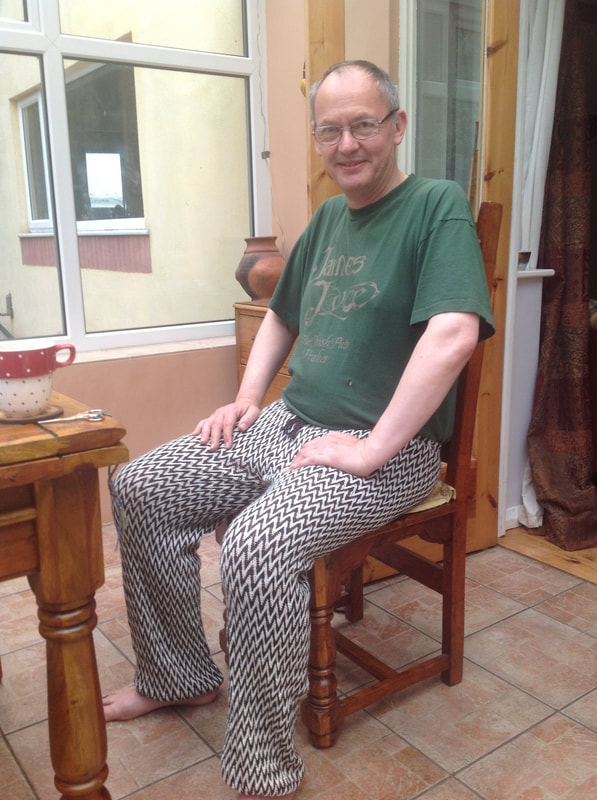
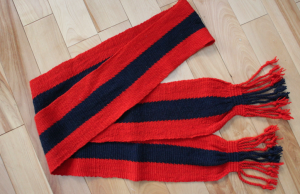
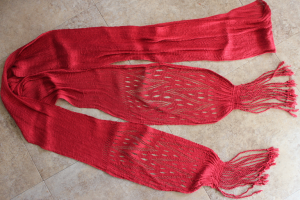
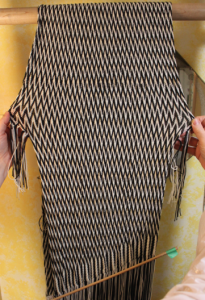
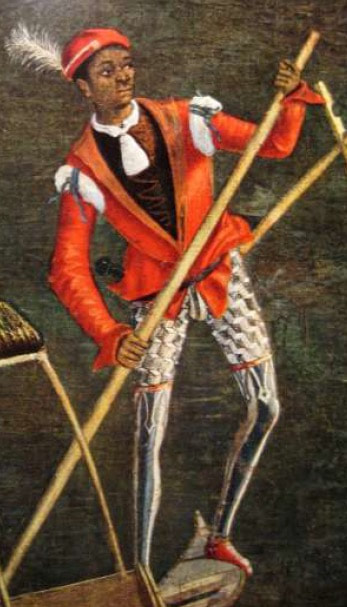
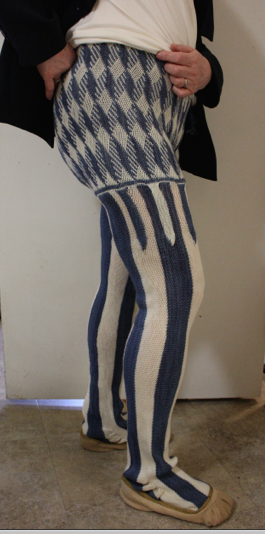
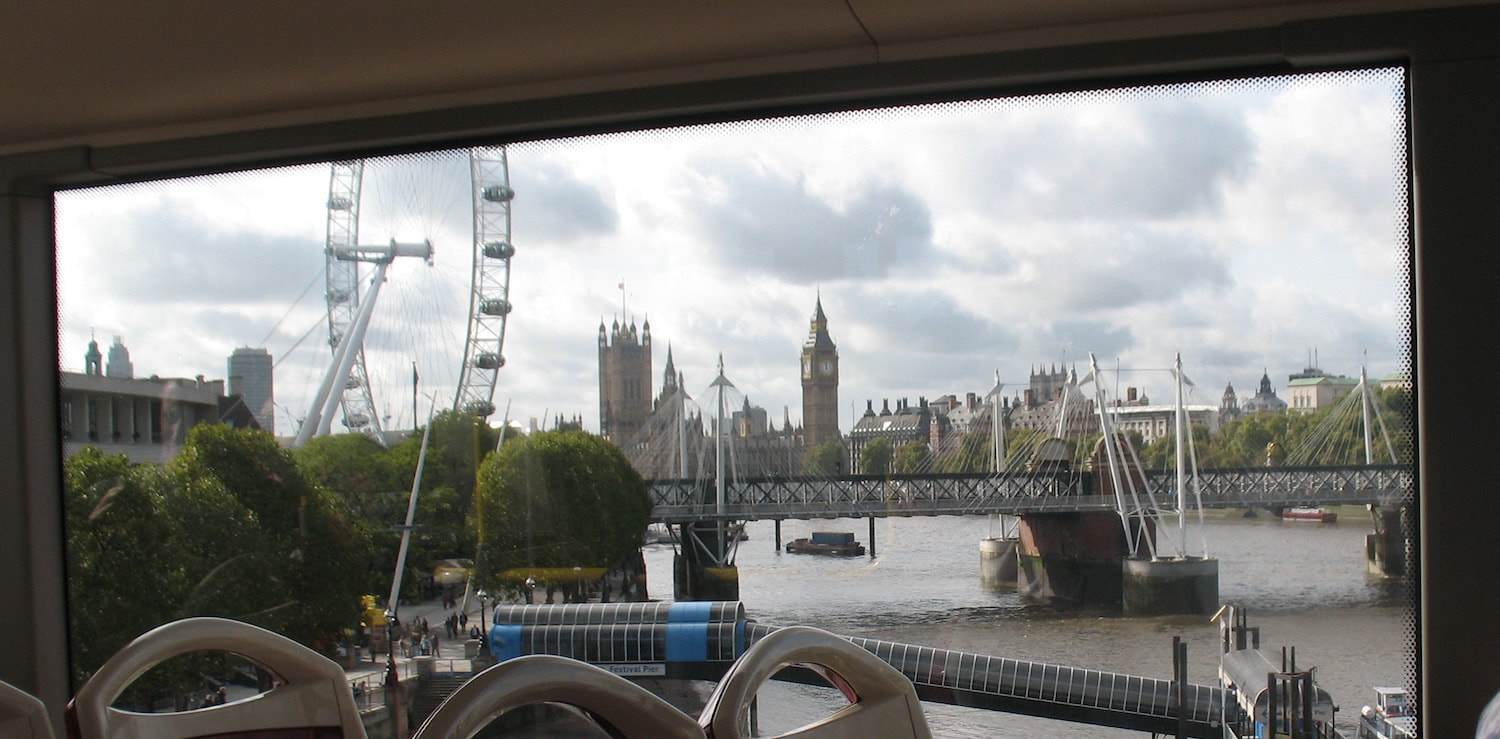
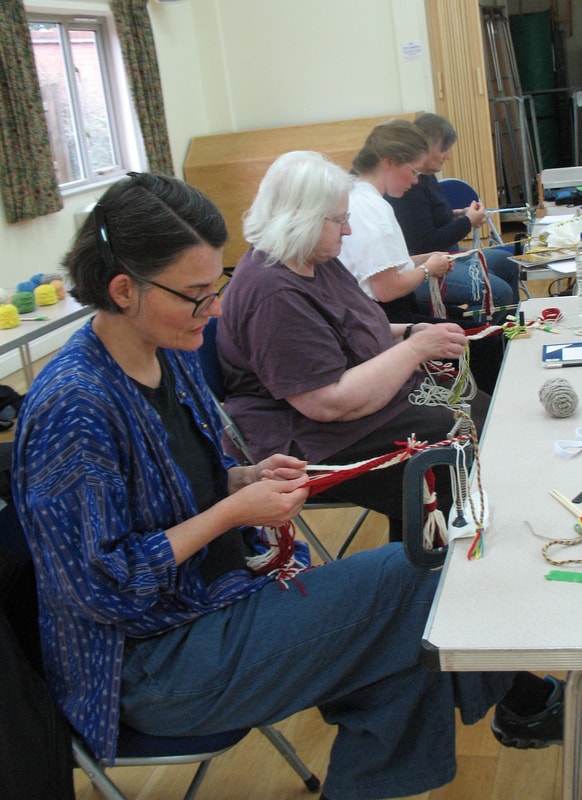
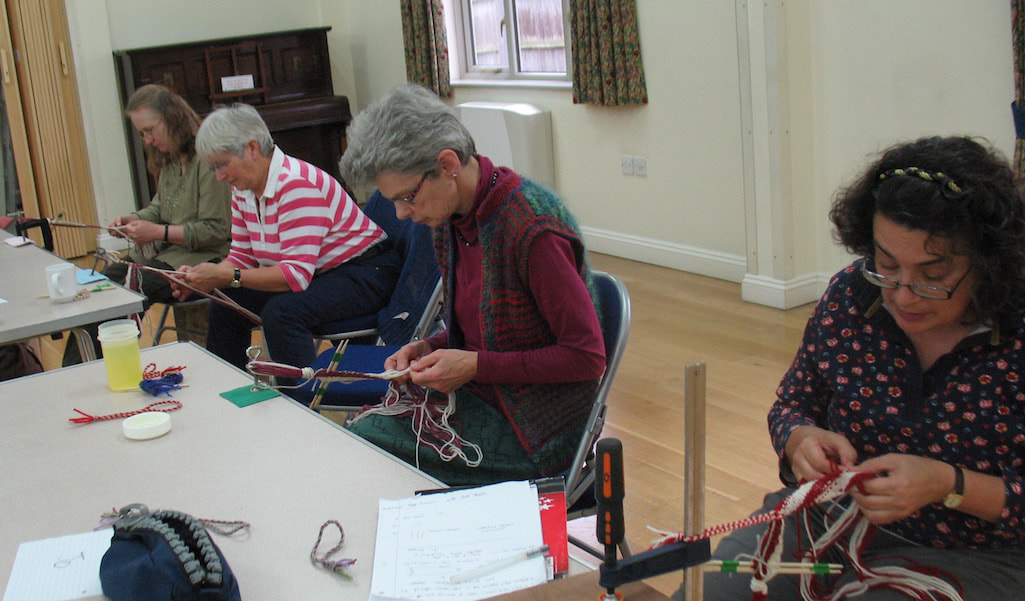
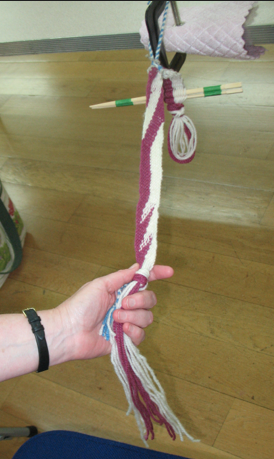

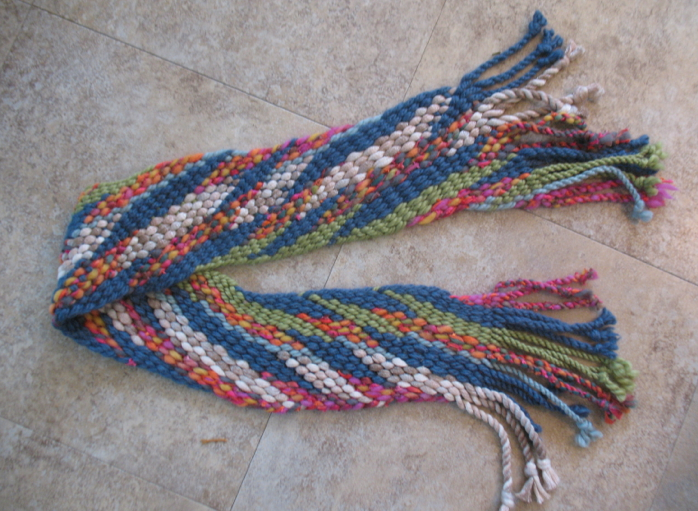
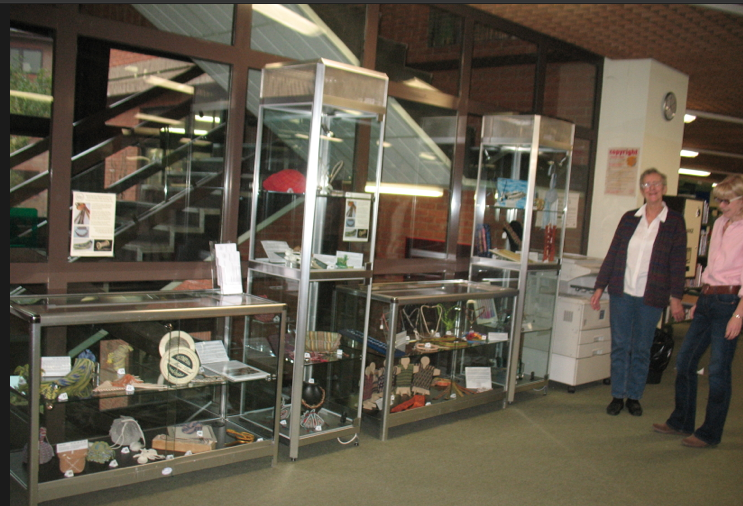
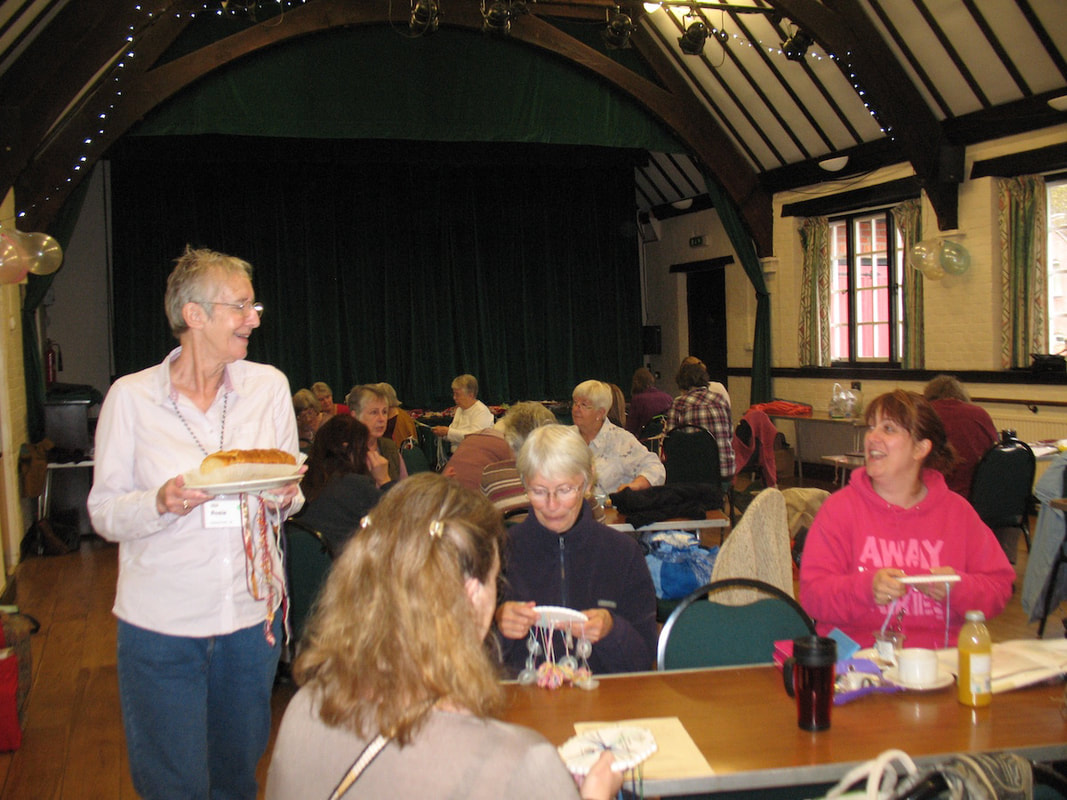
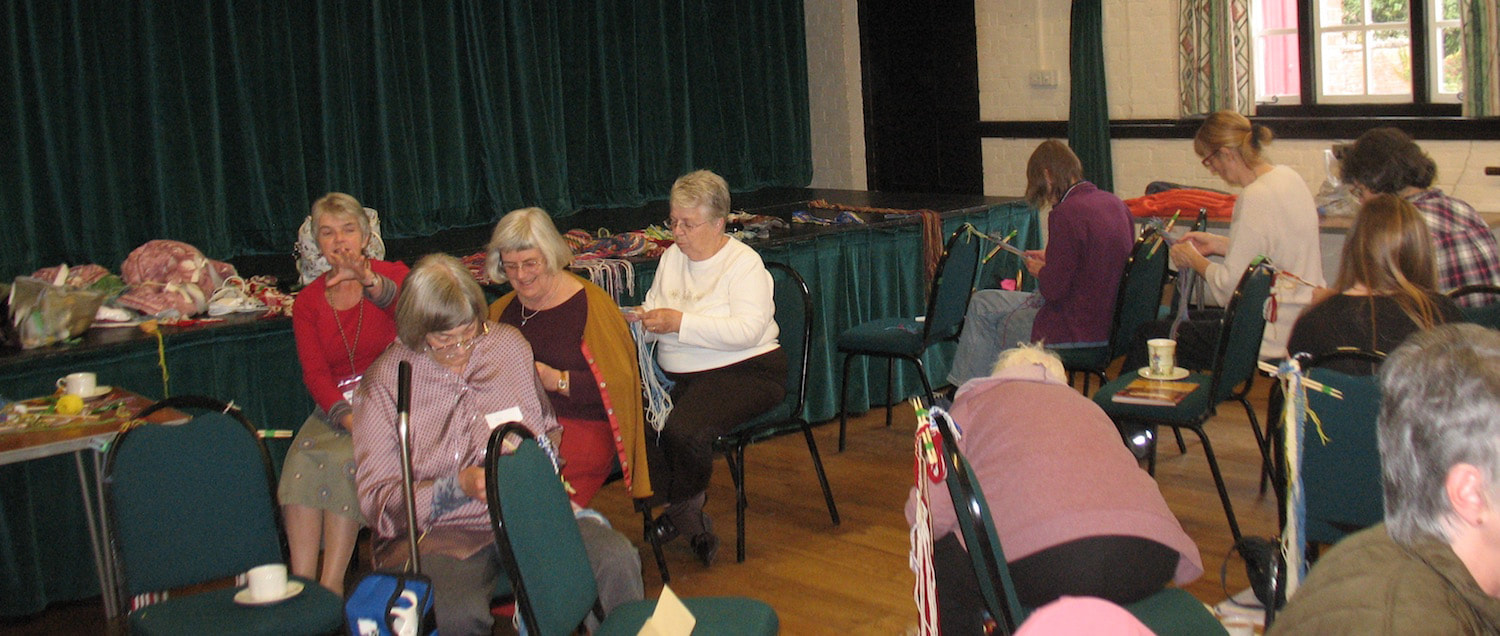

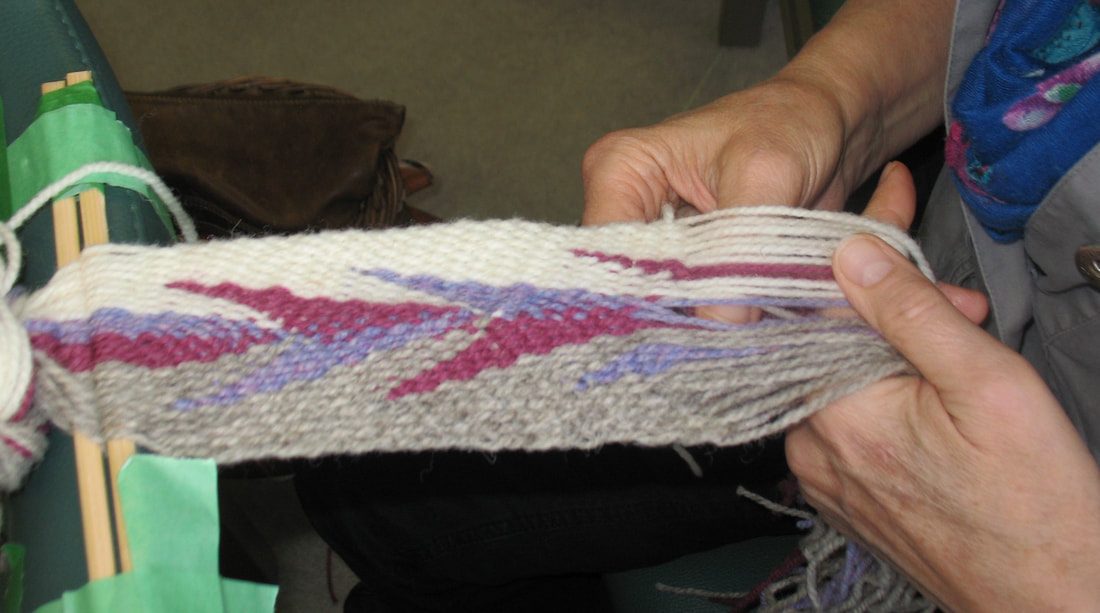
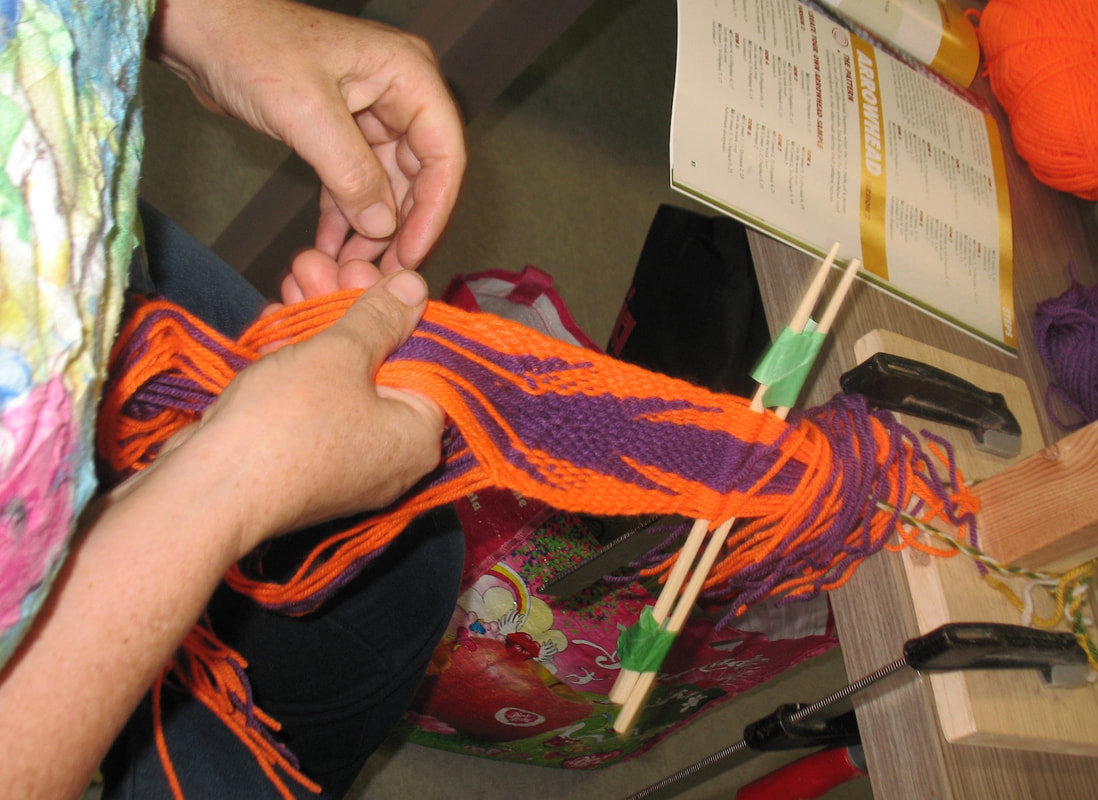
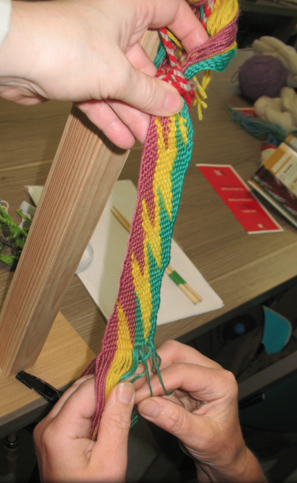
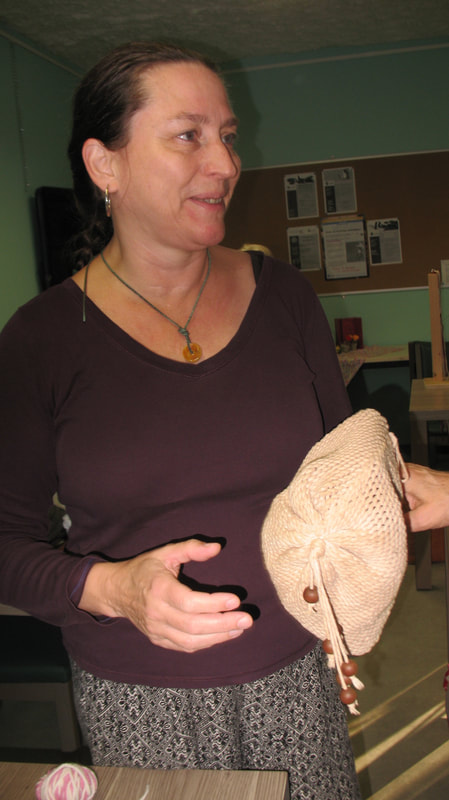
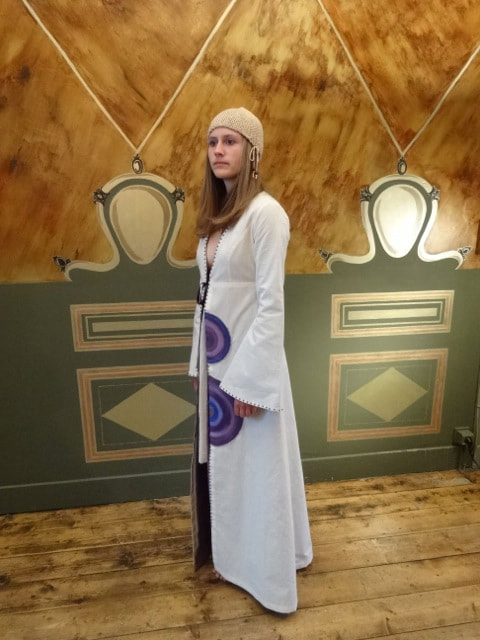
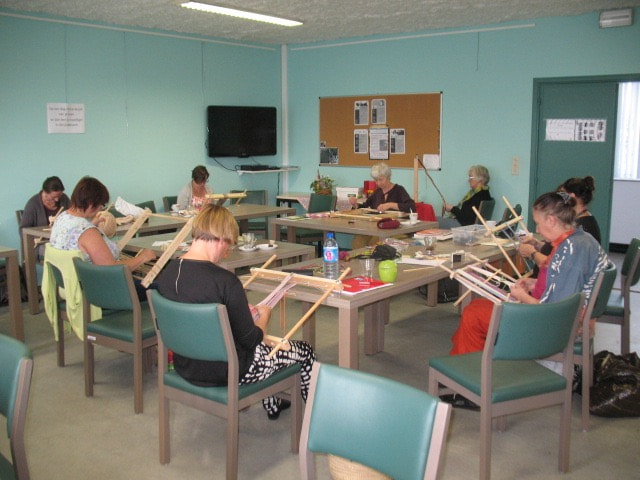
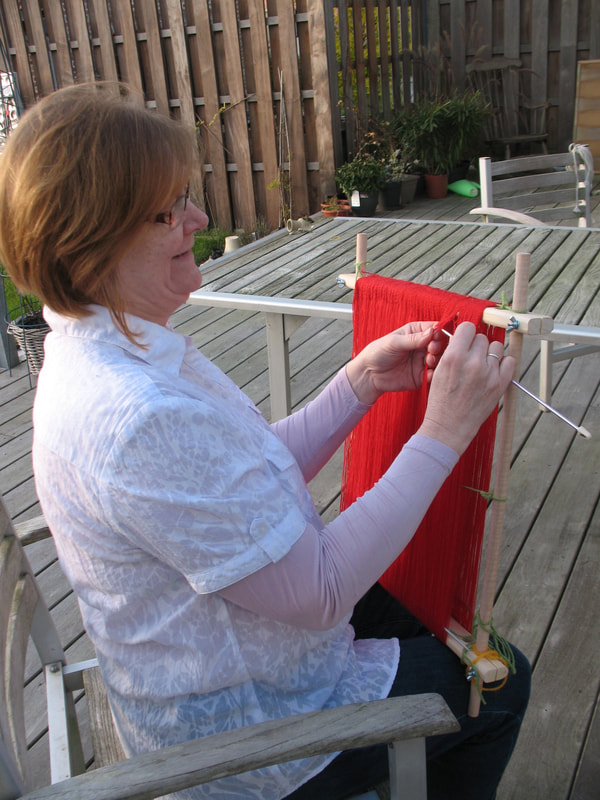
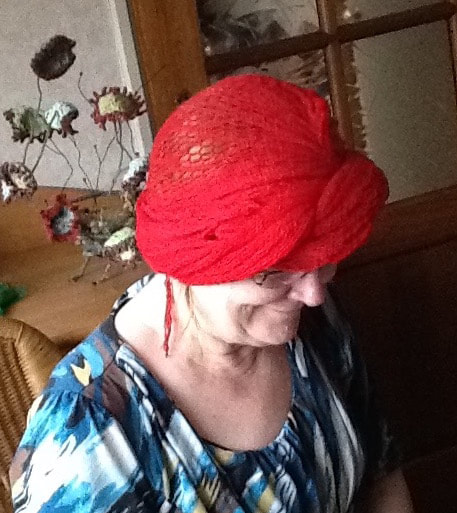
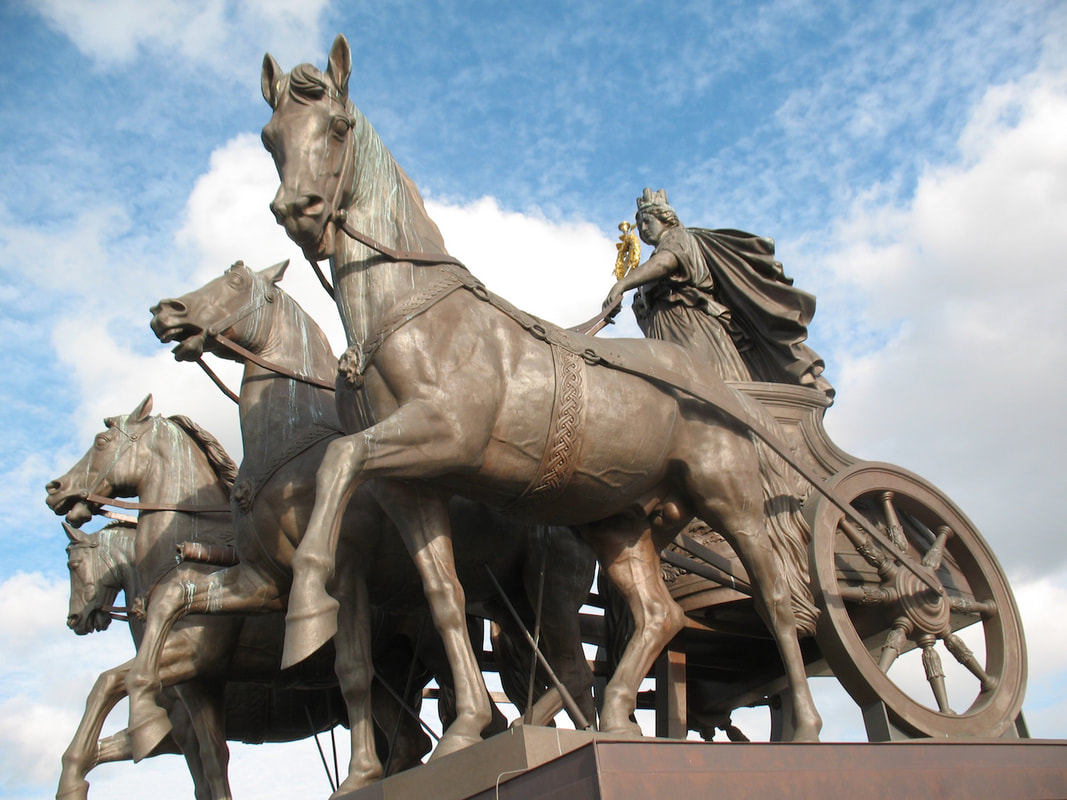
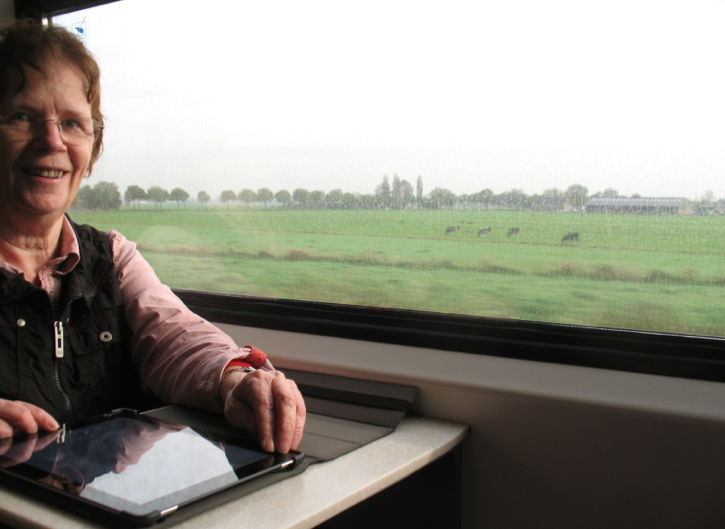
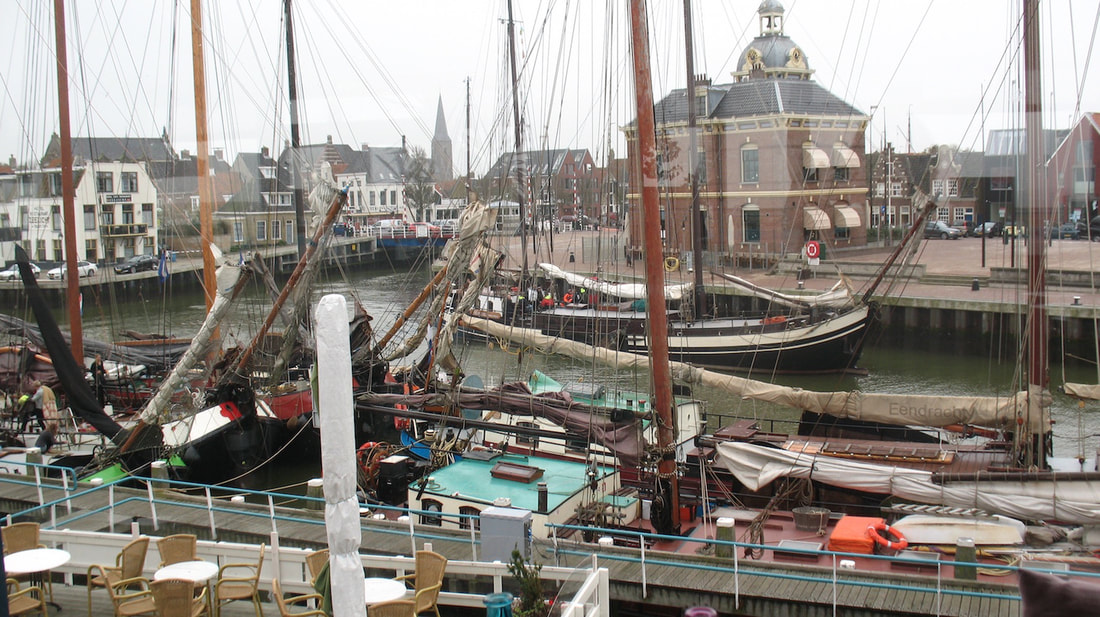
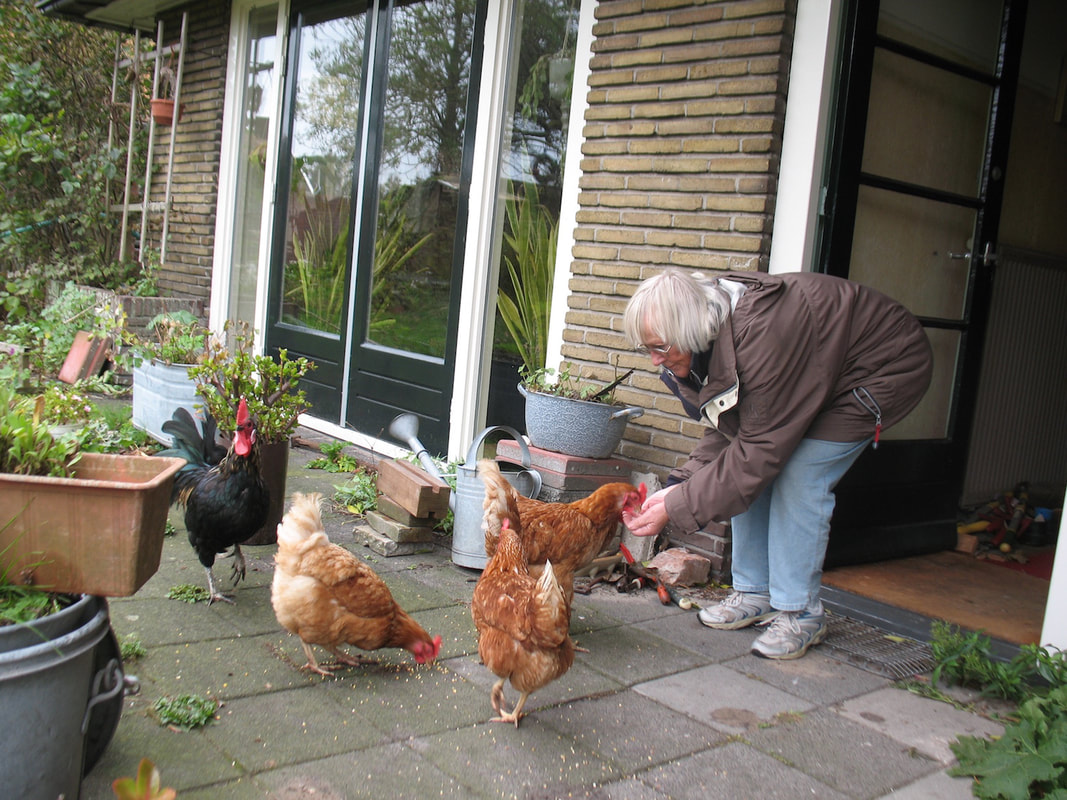
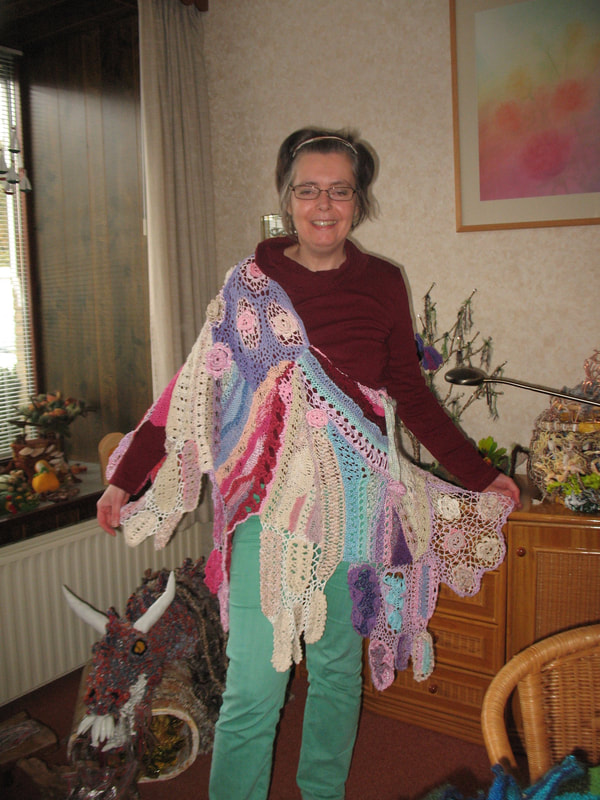
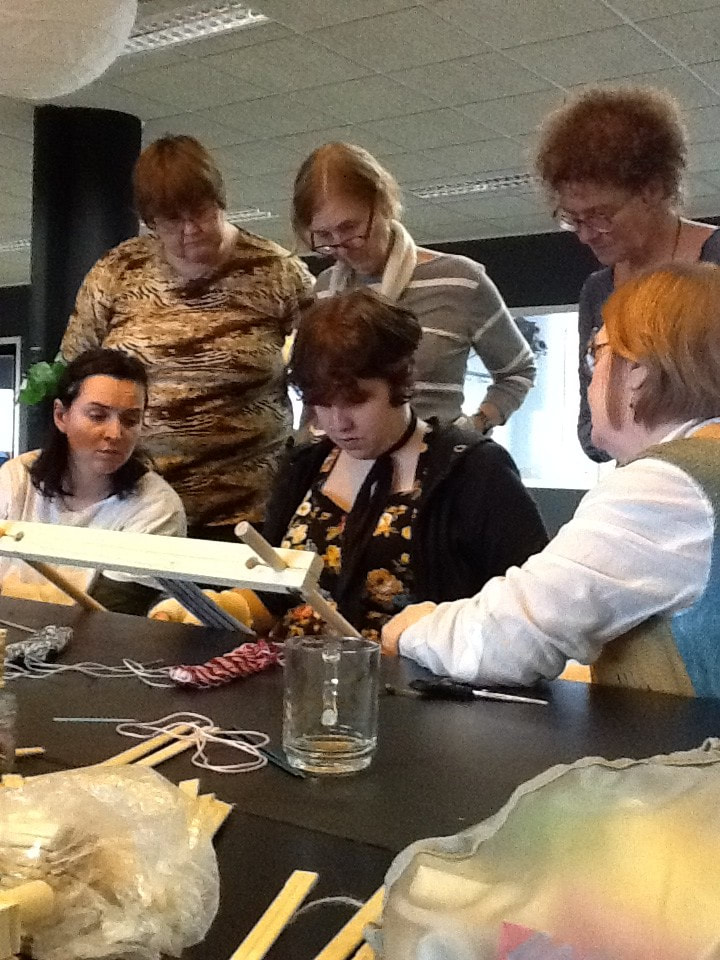
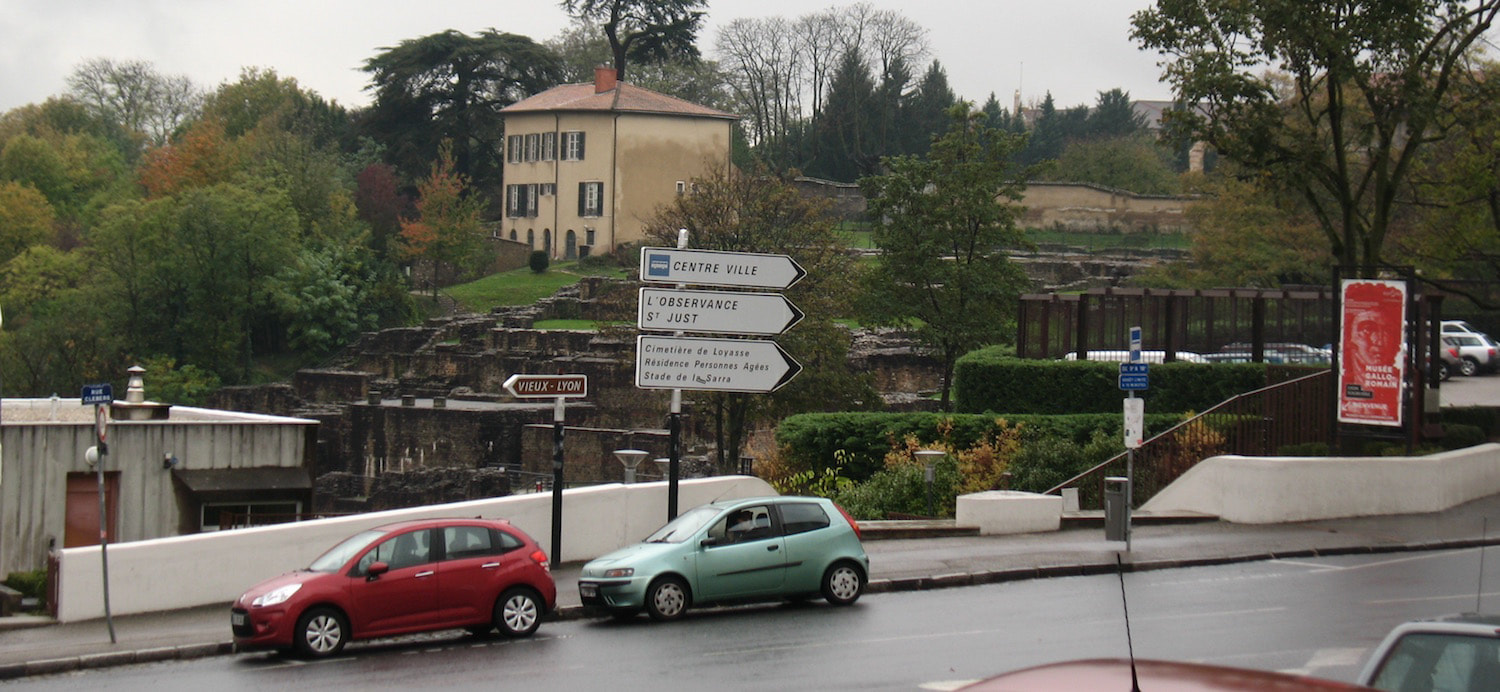
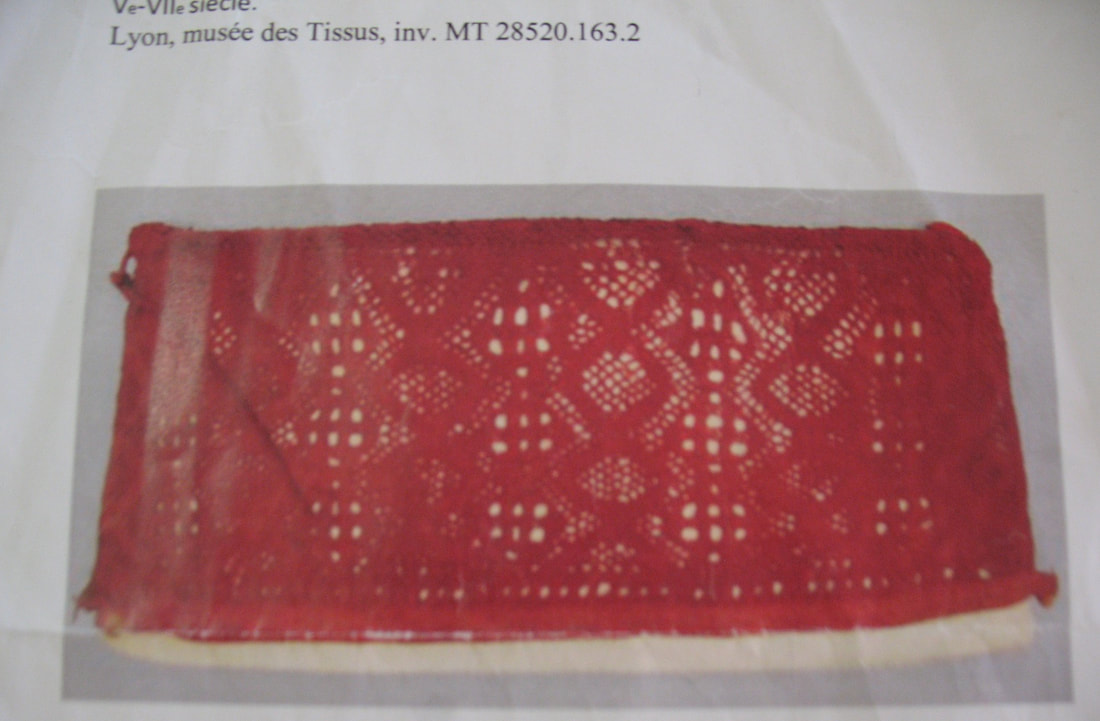
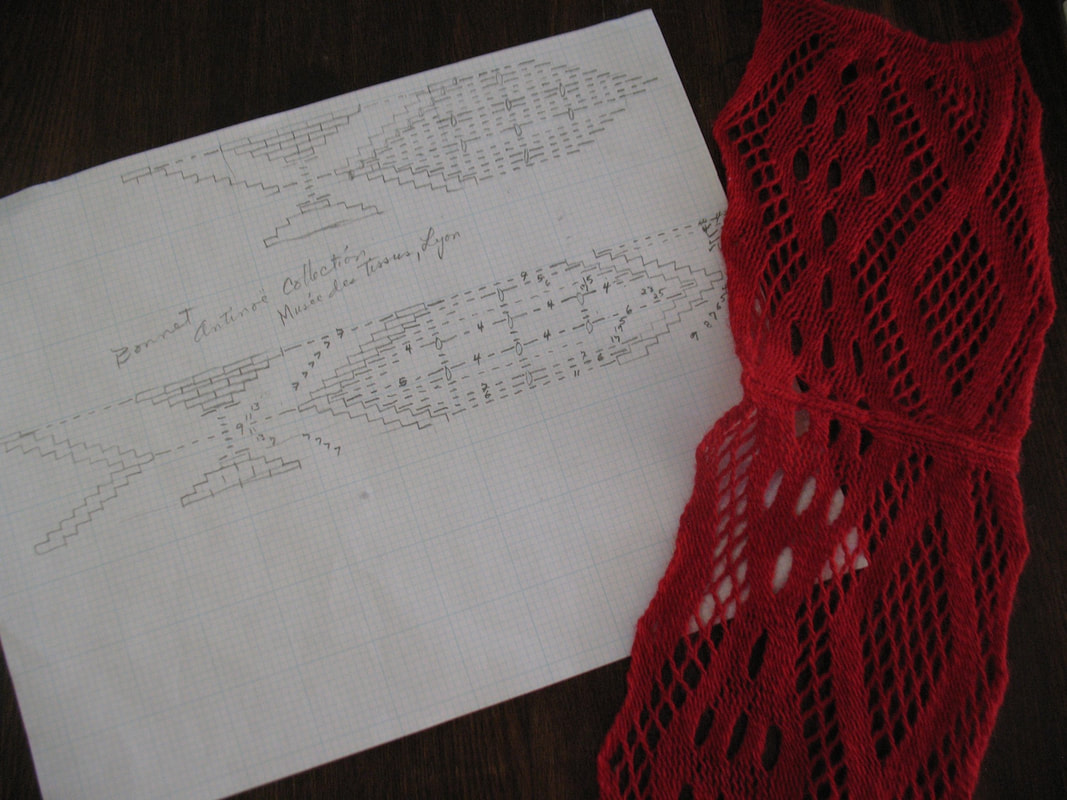
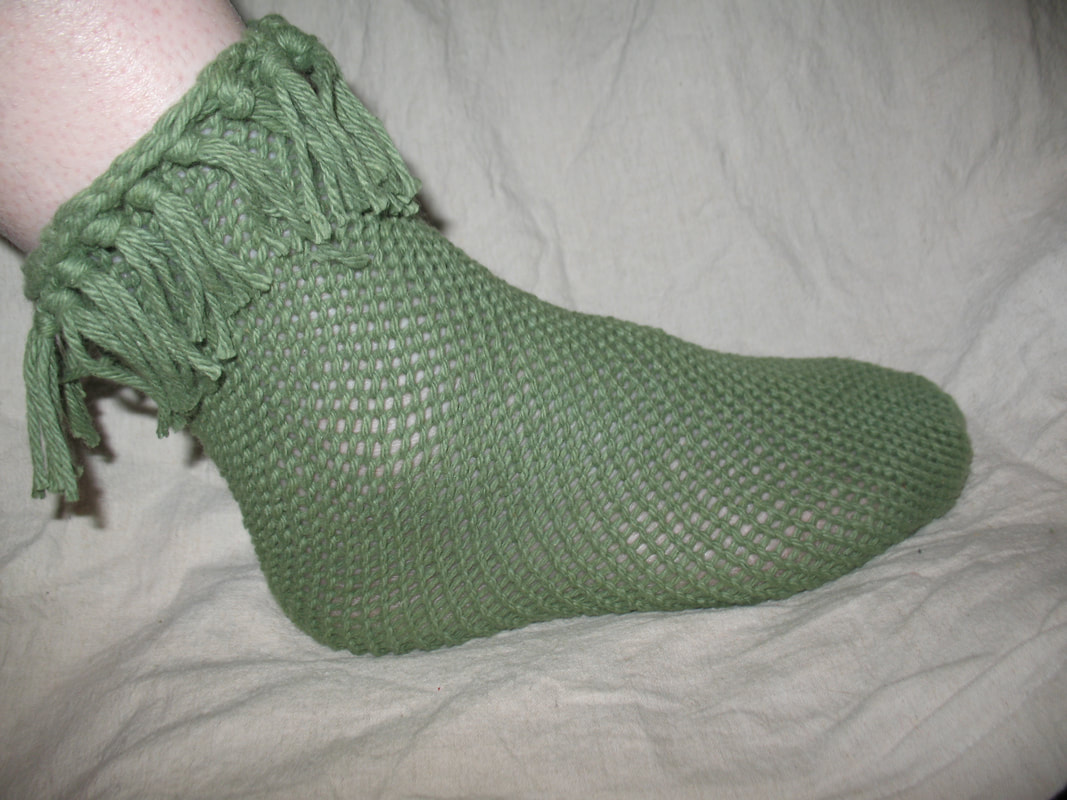
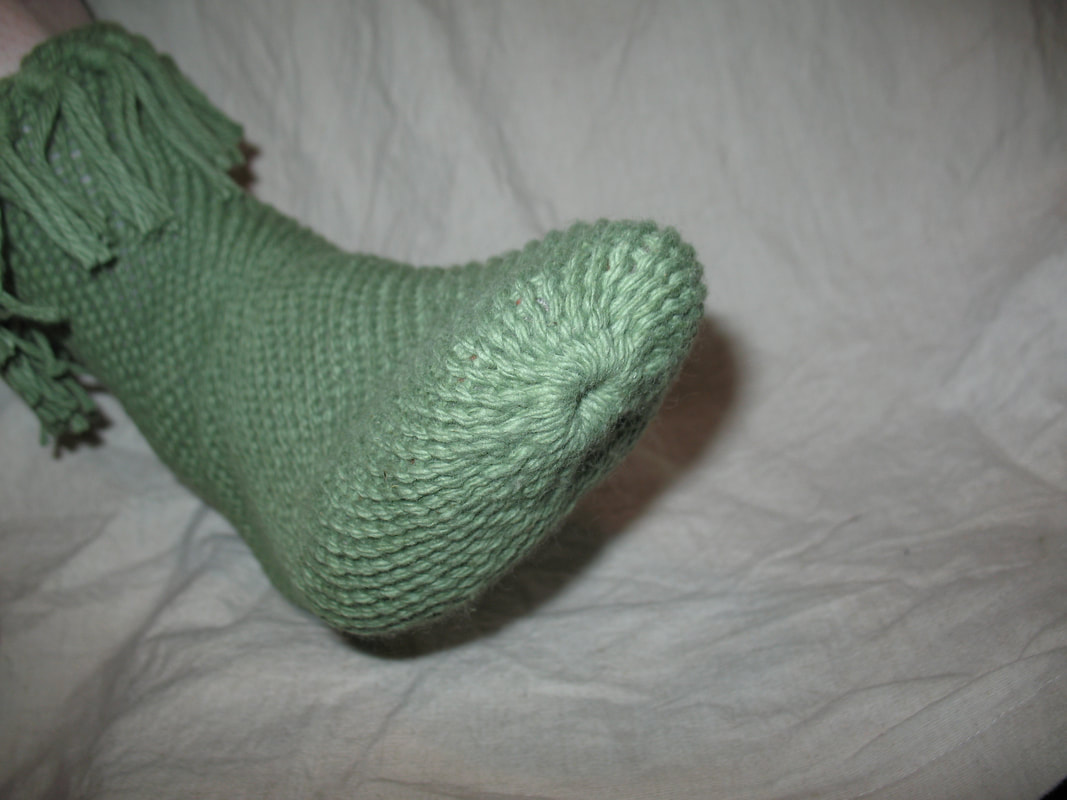
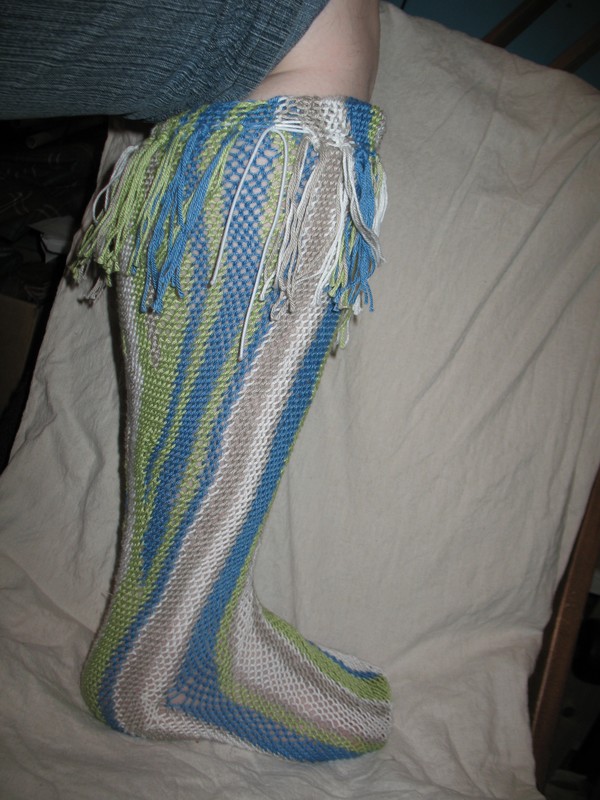
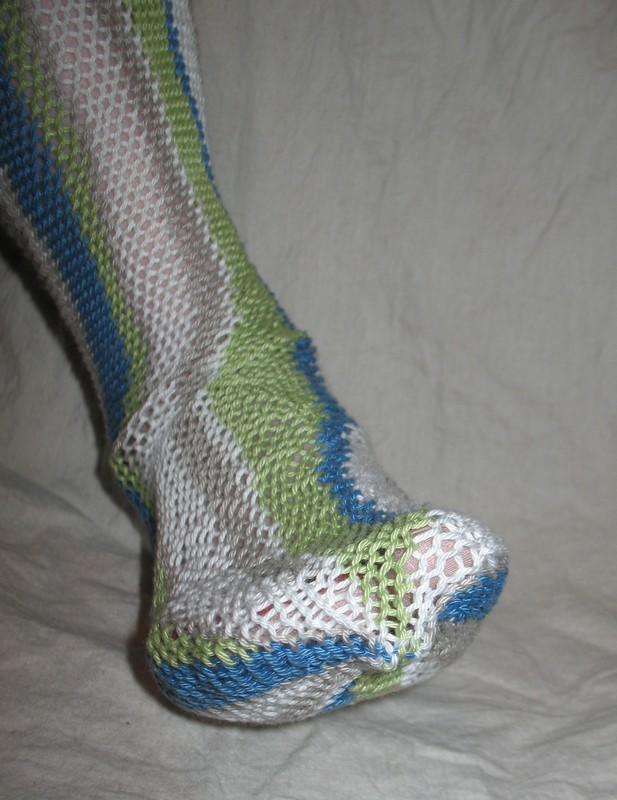
 RSS Feed
RSS Feed